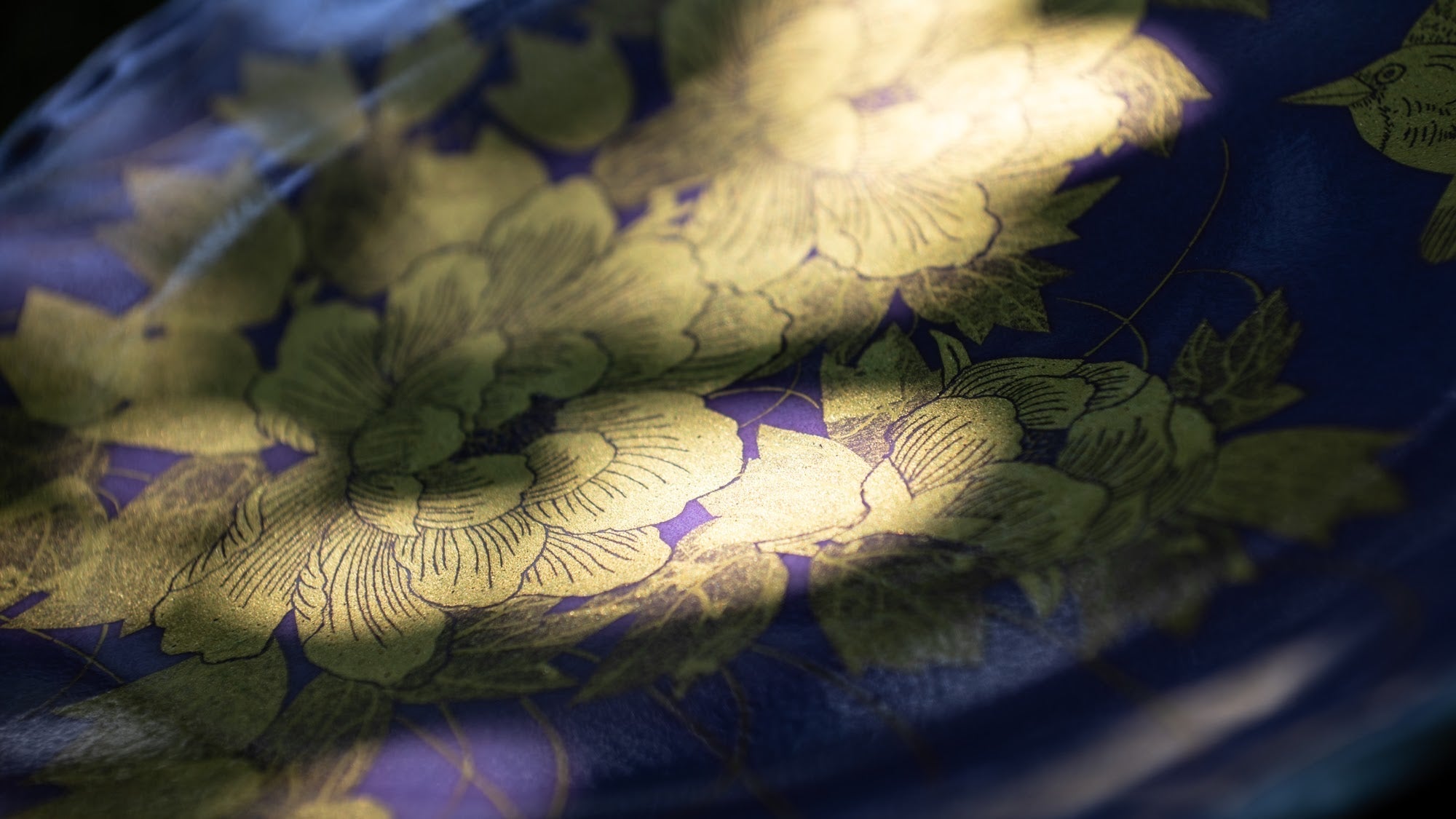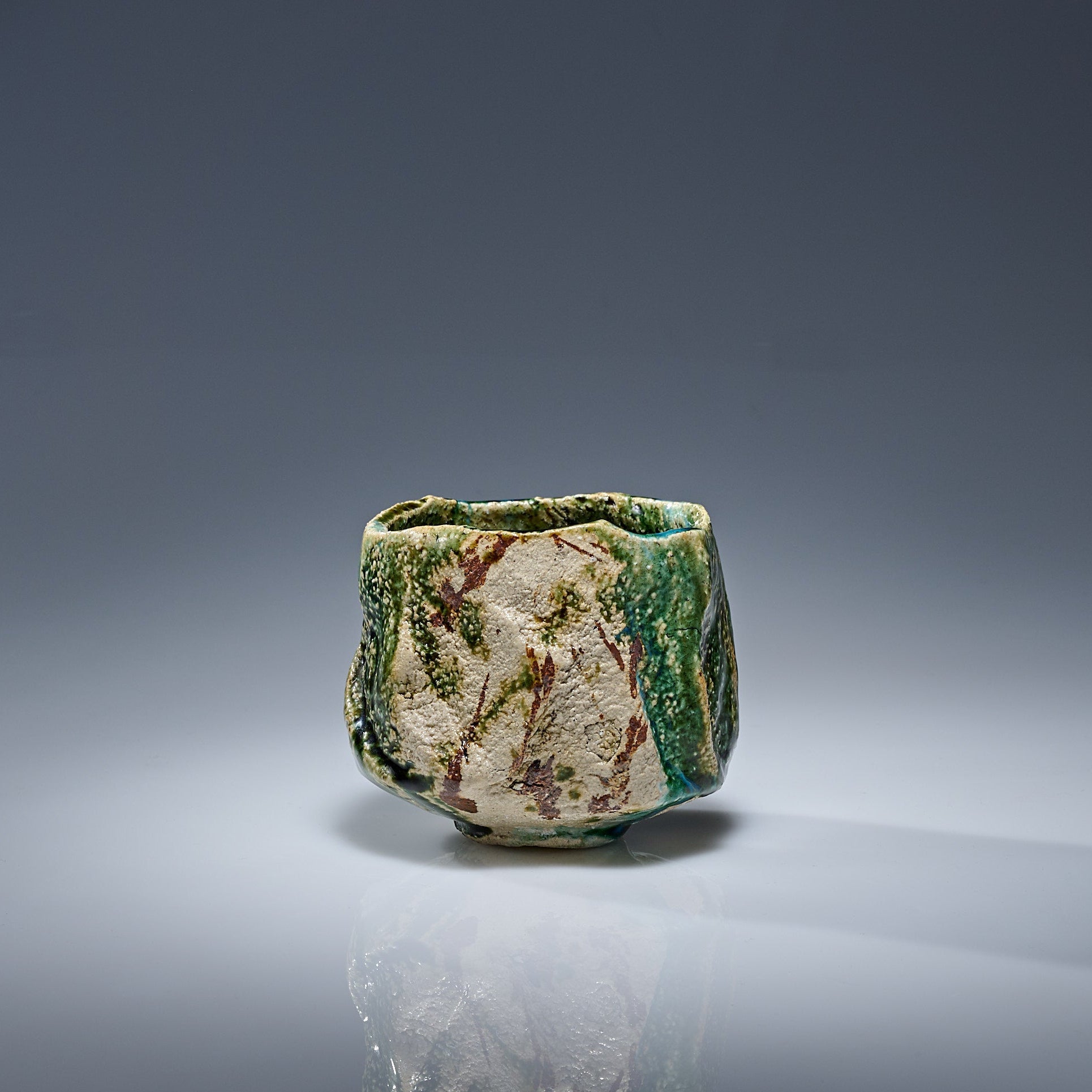
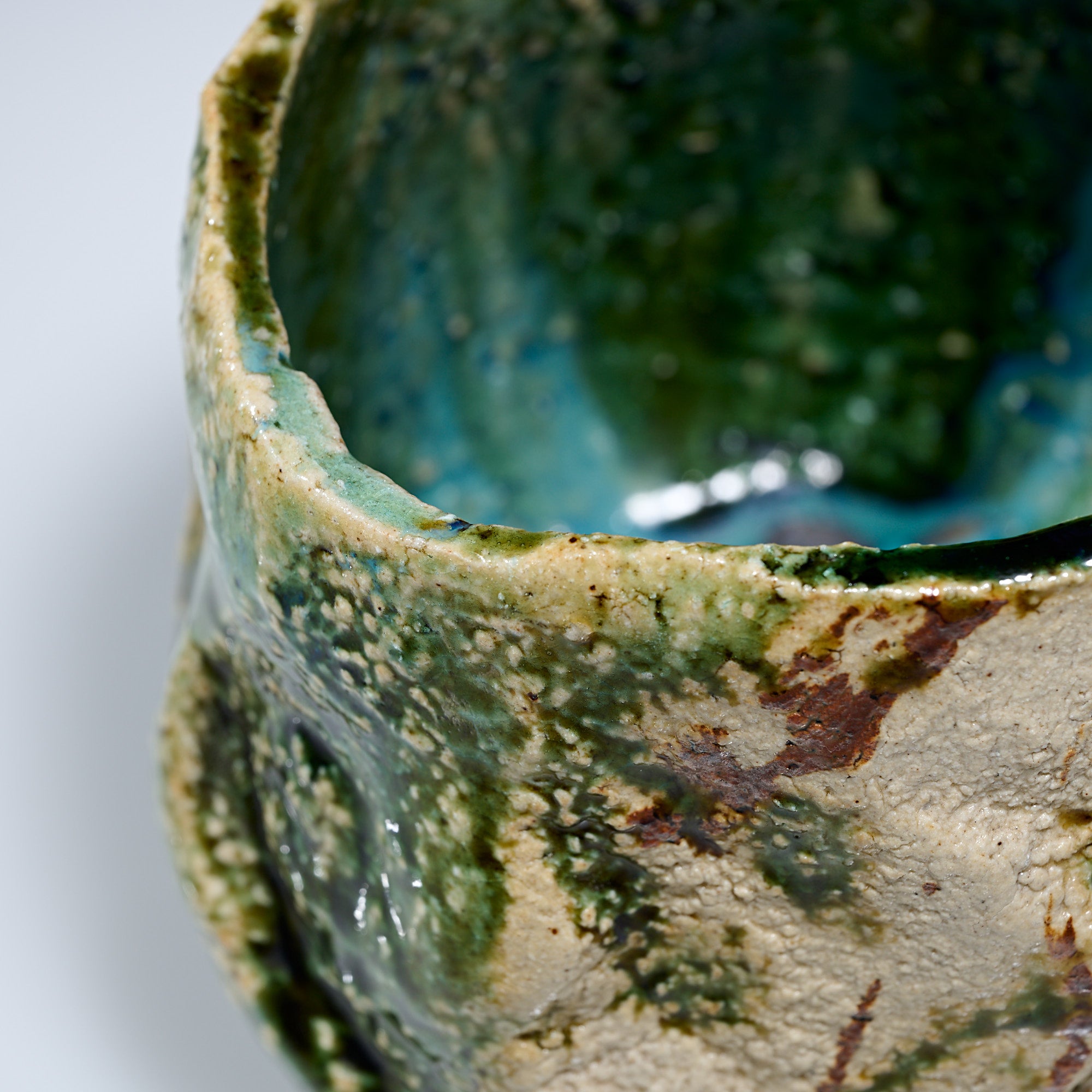
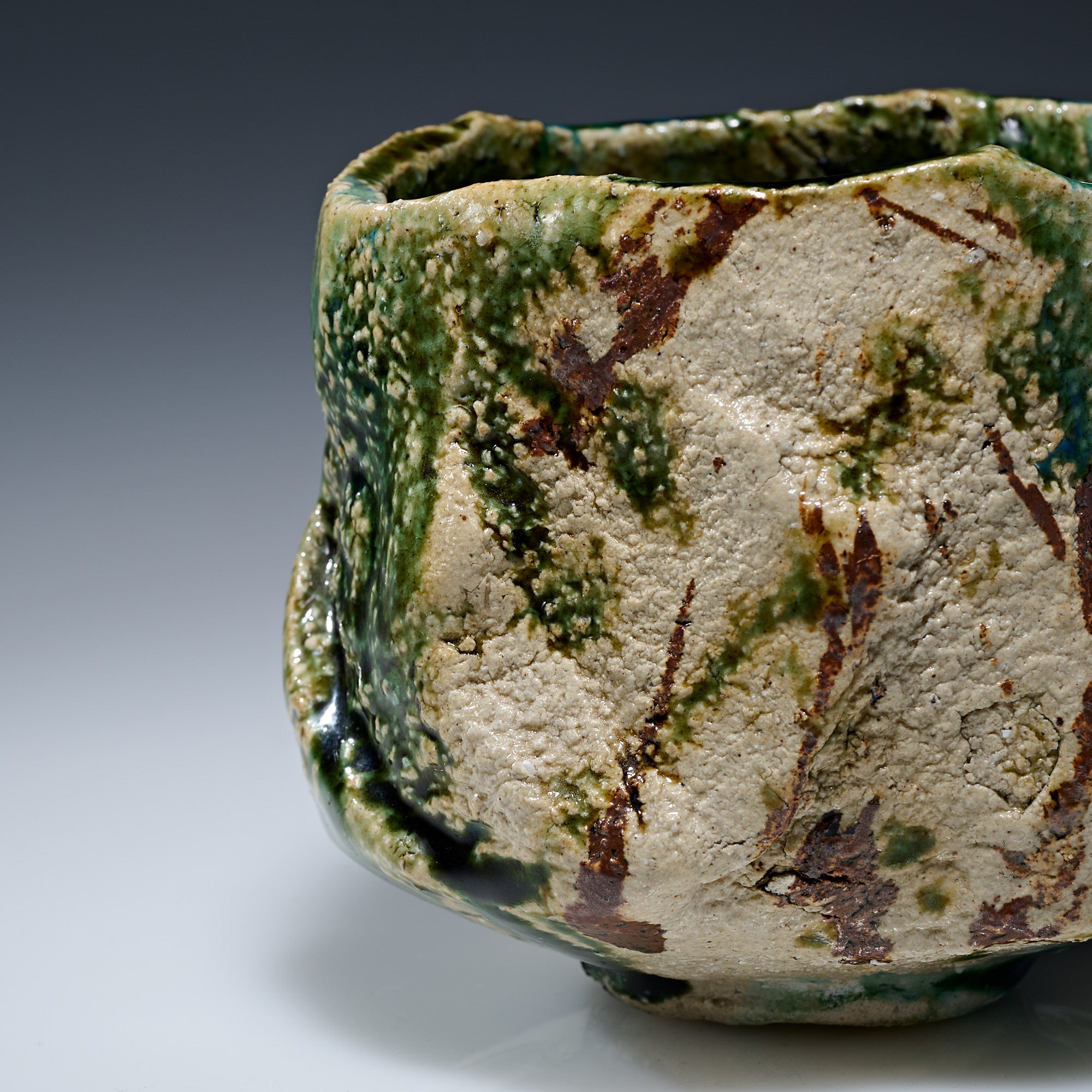
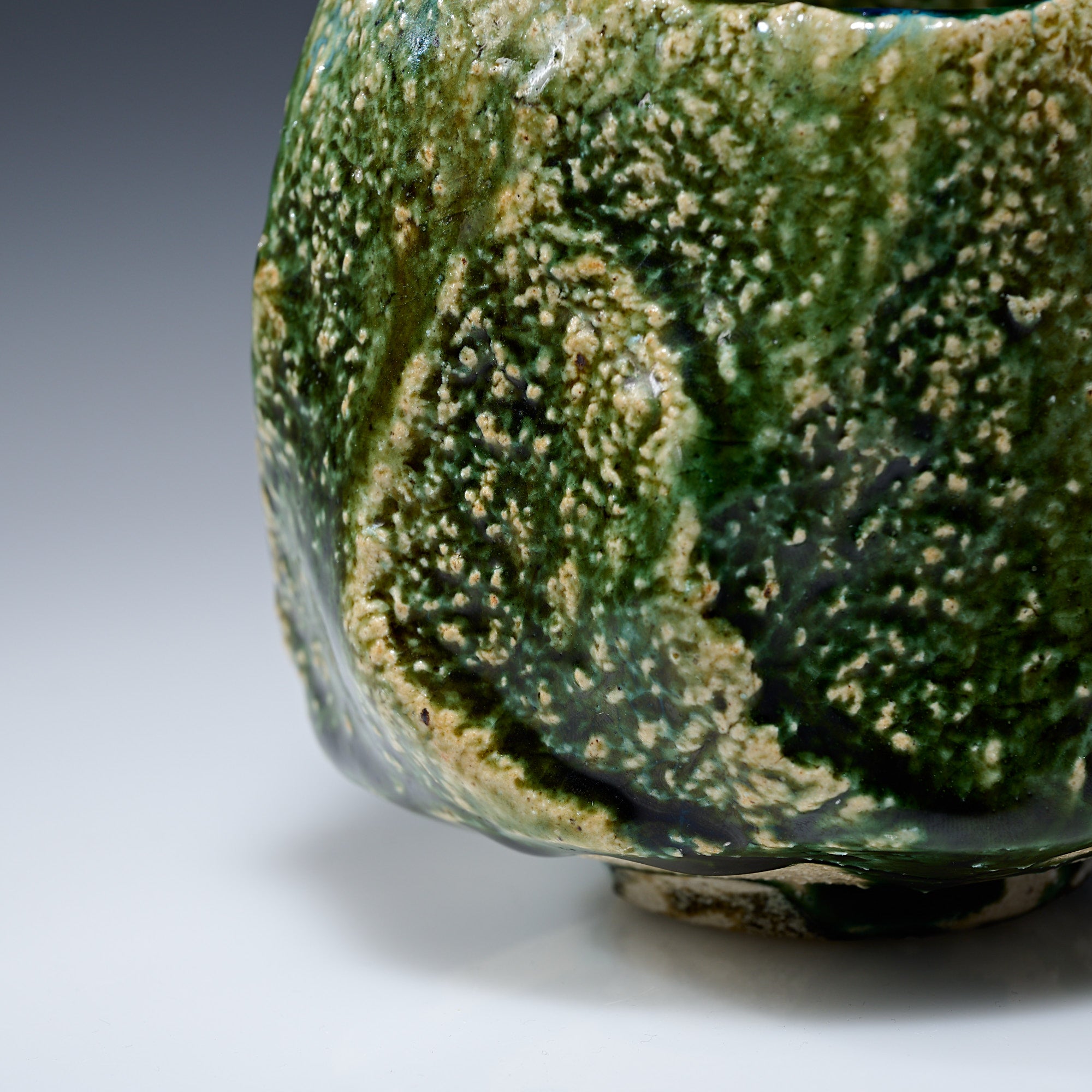
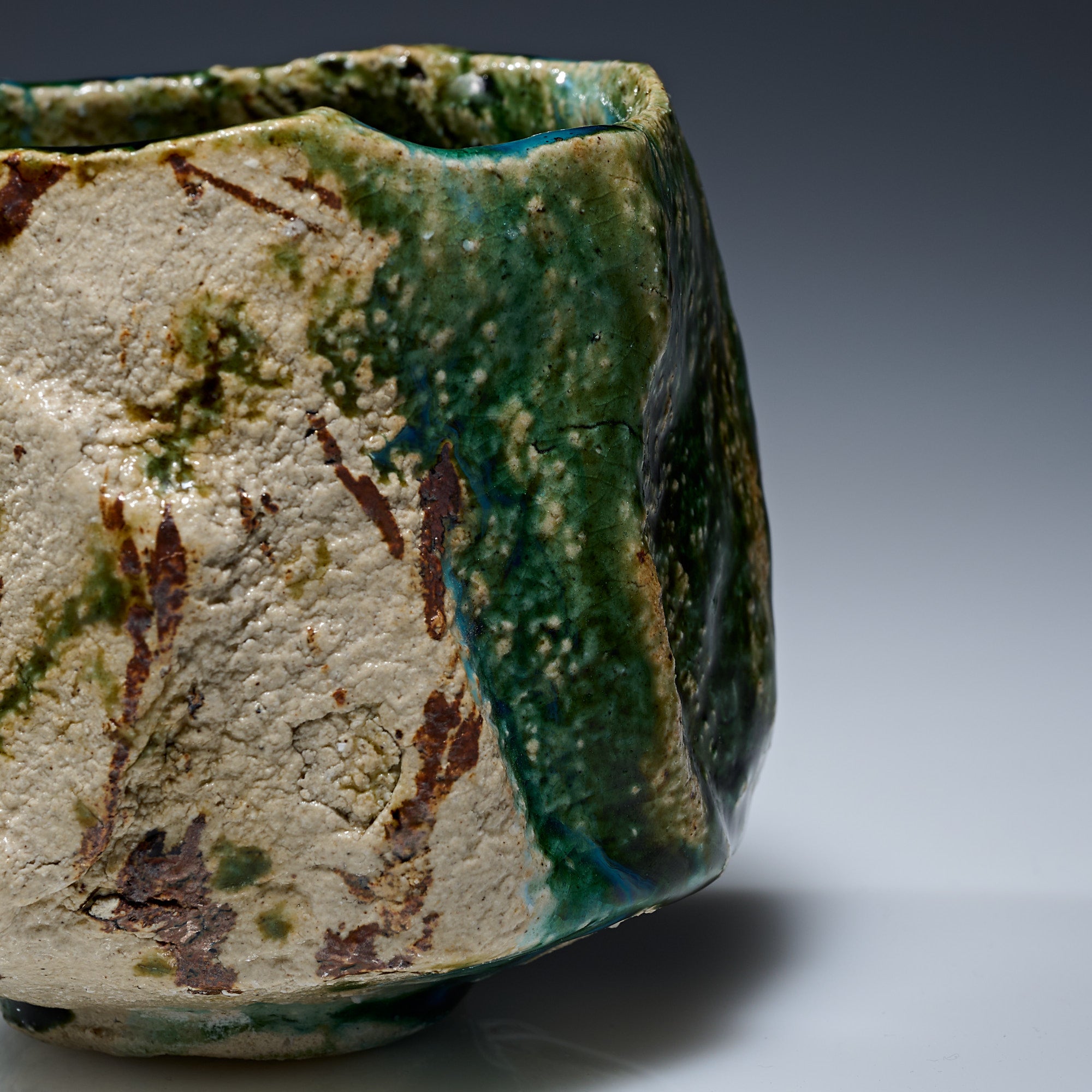
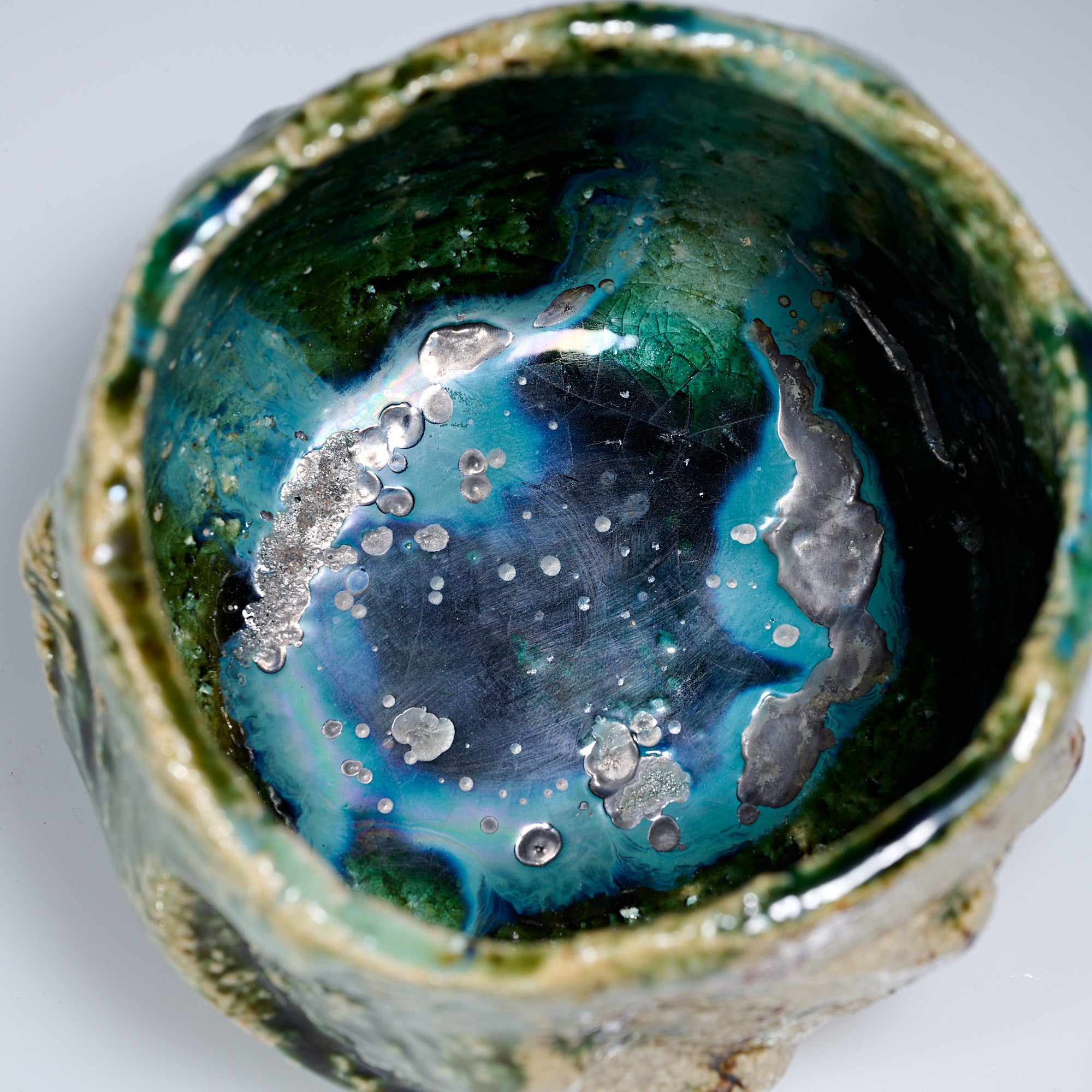
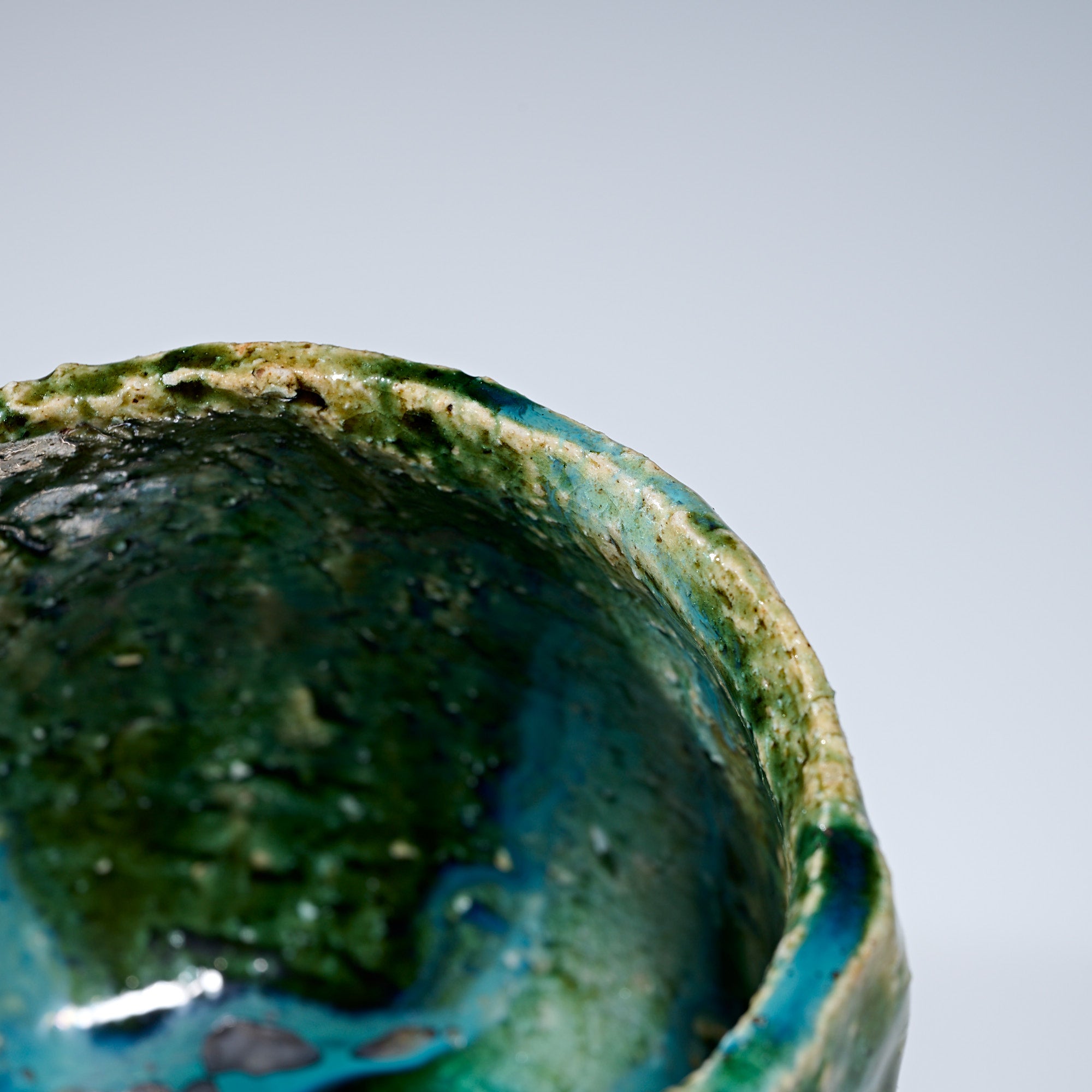
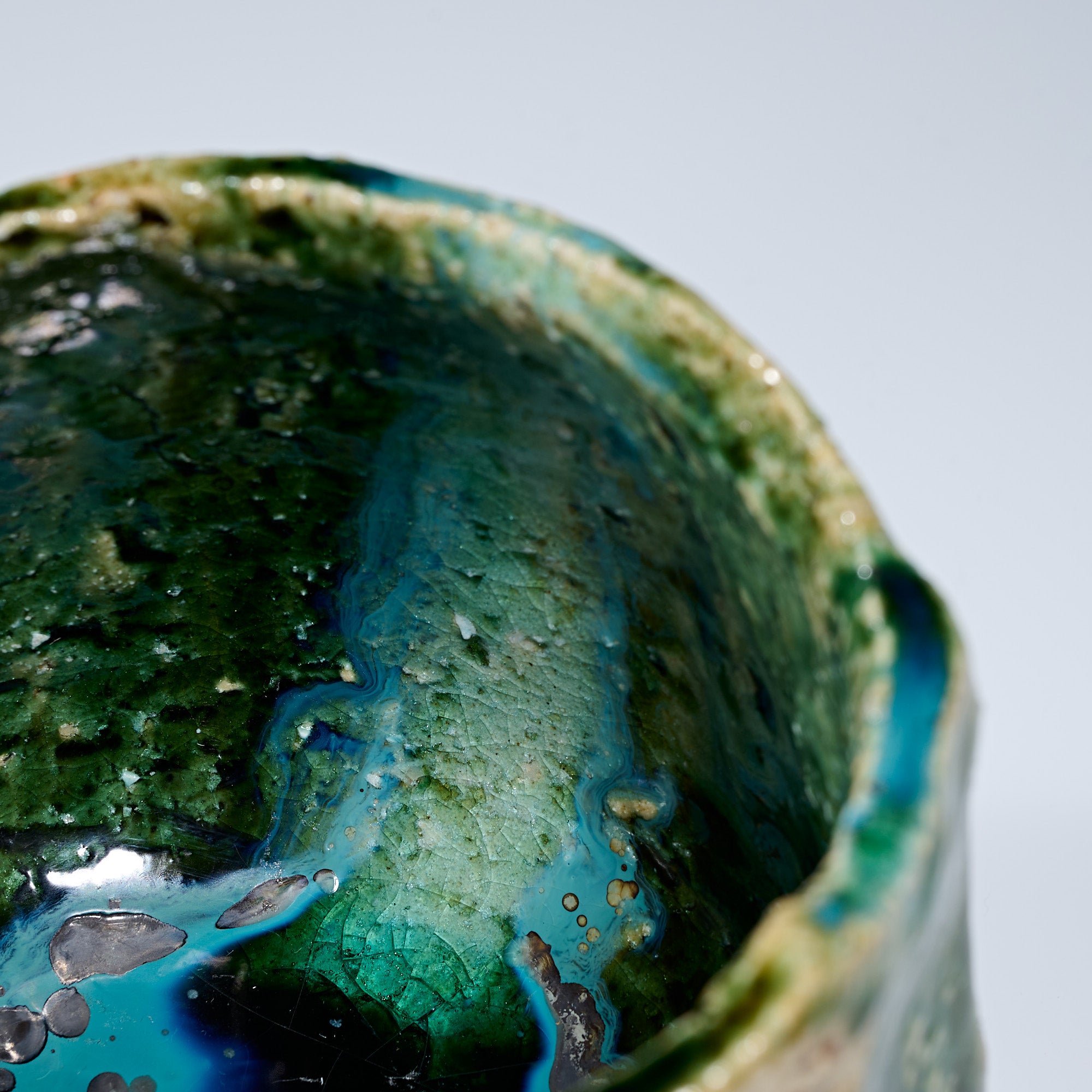
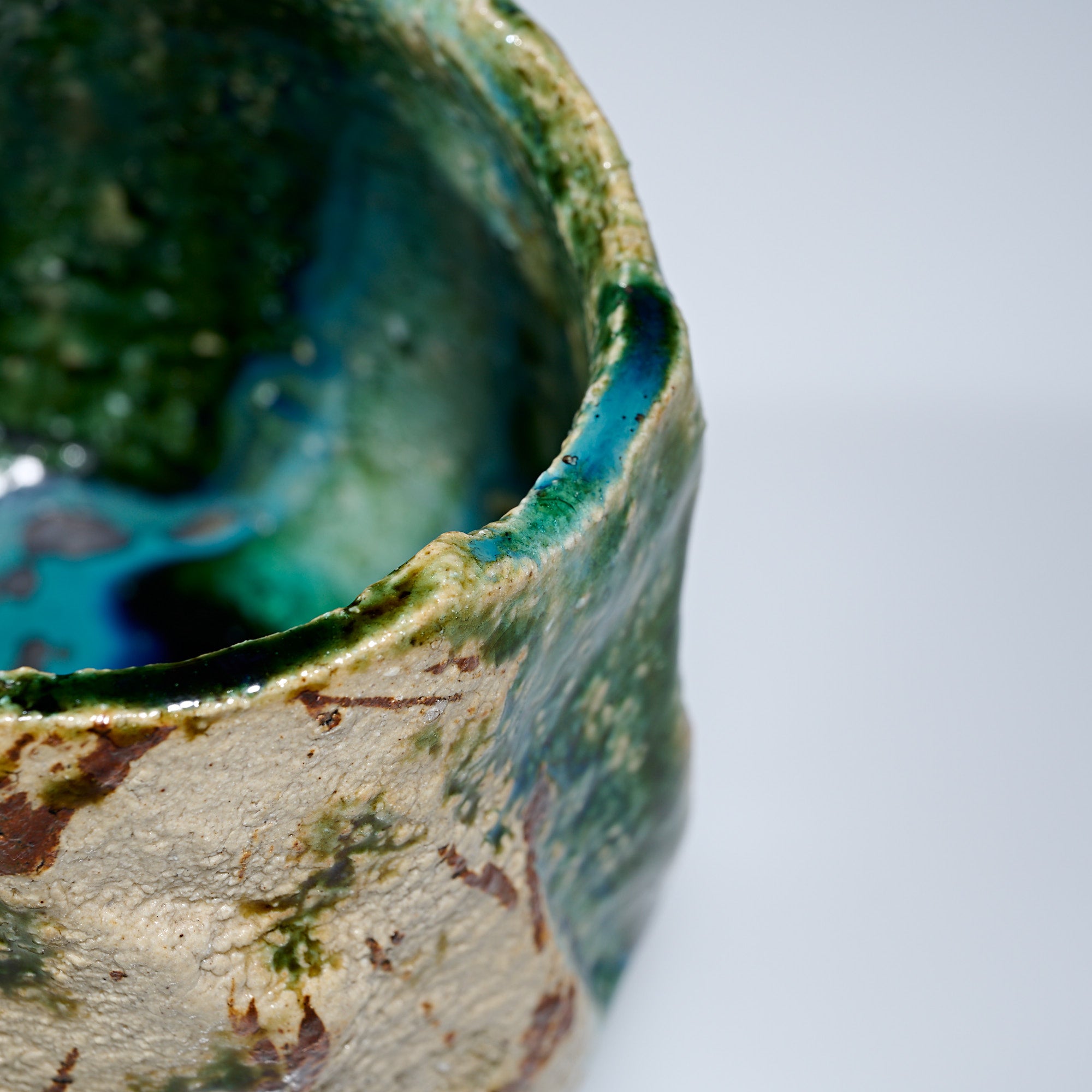
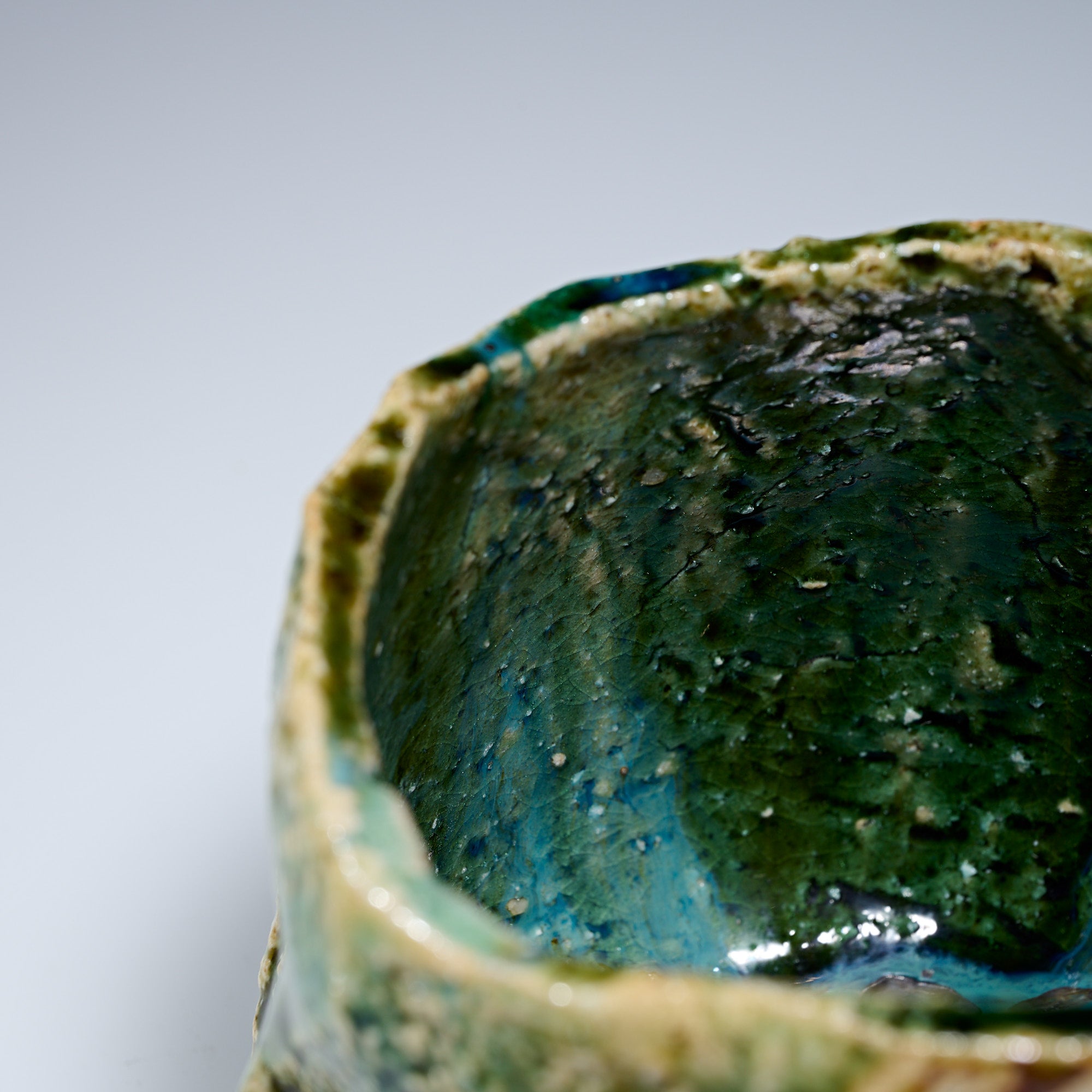
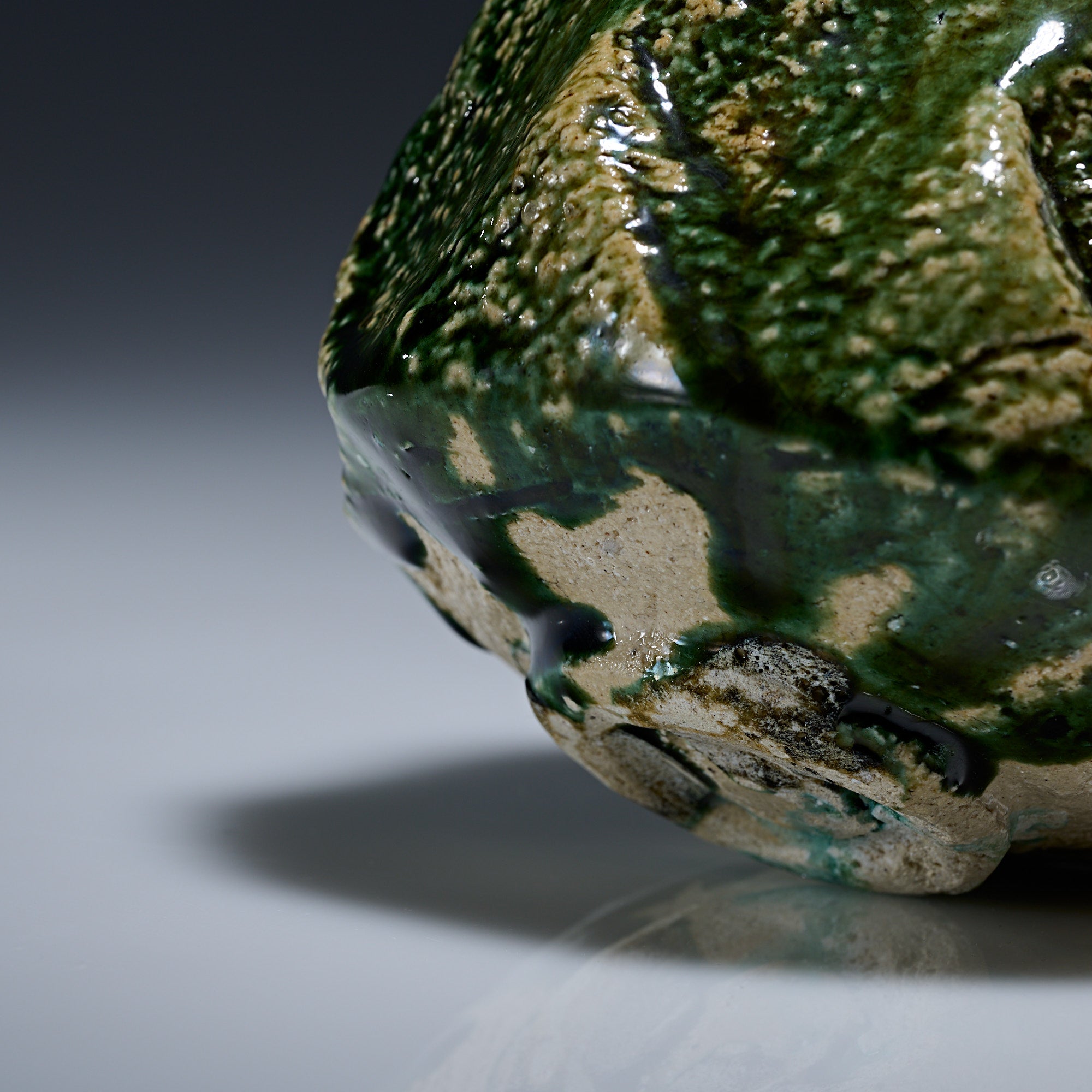
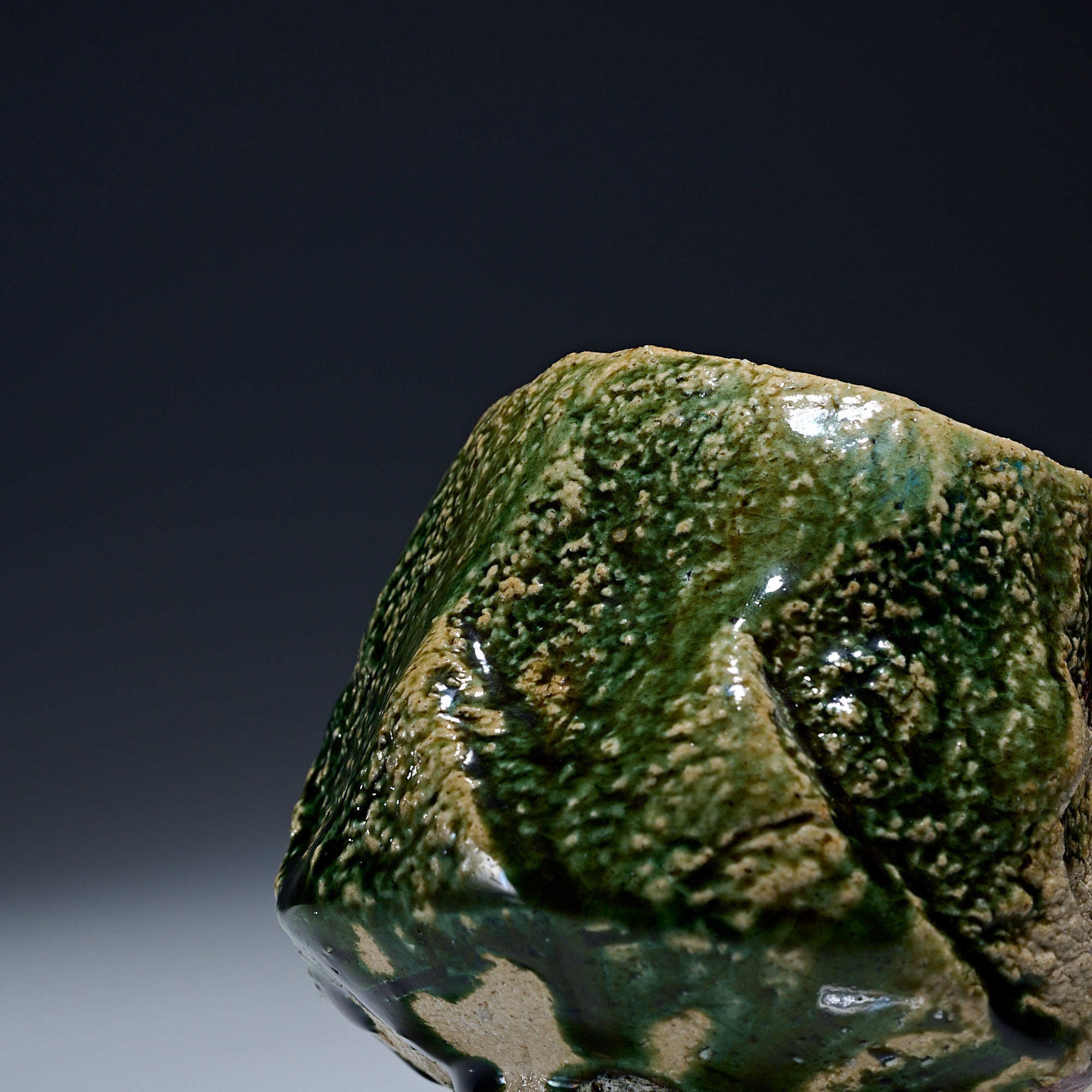
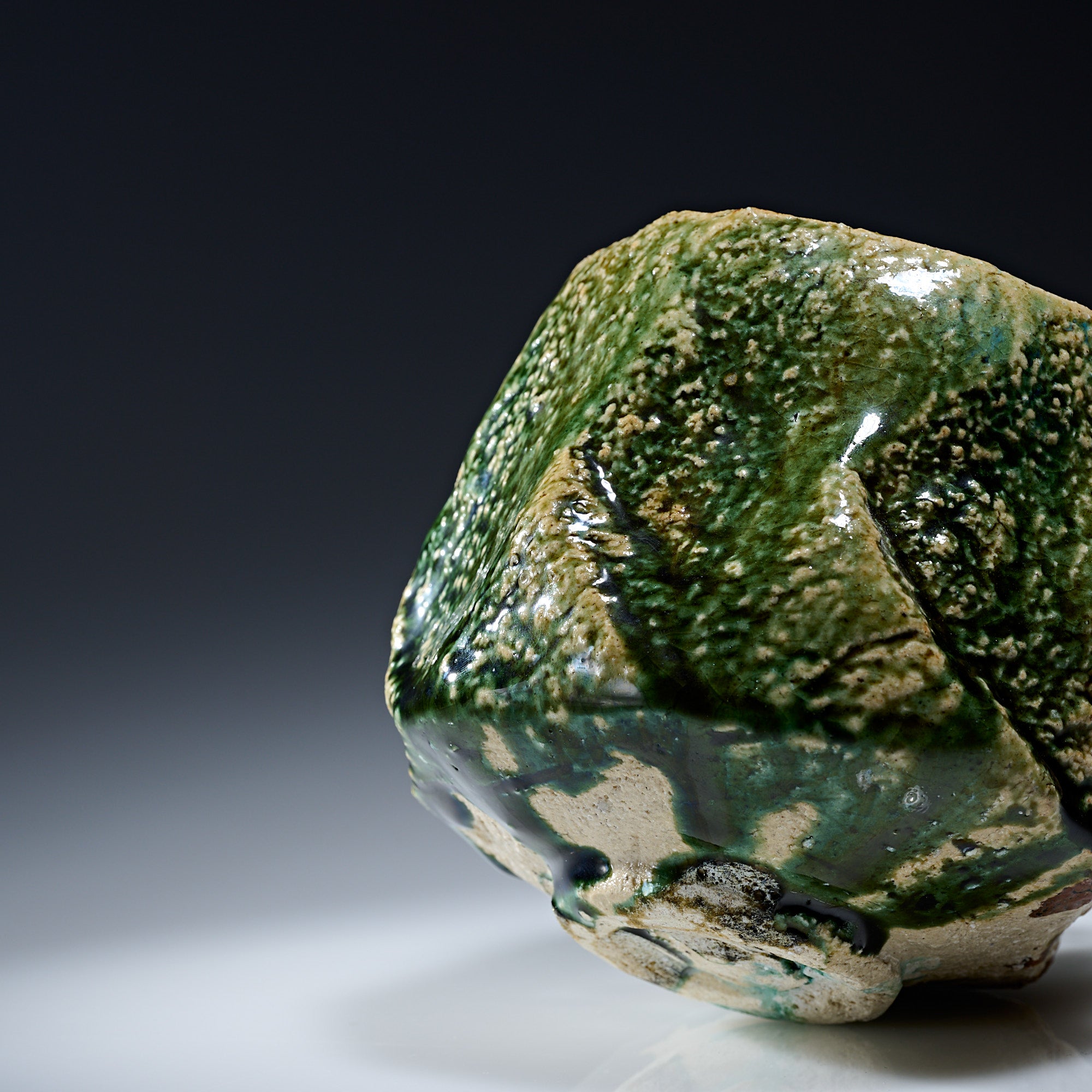
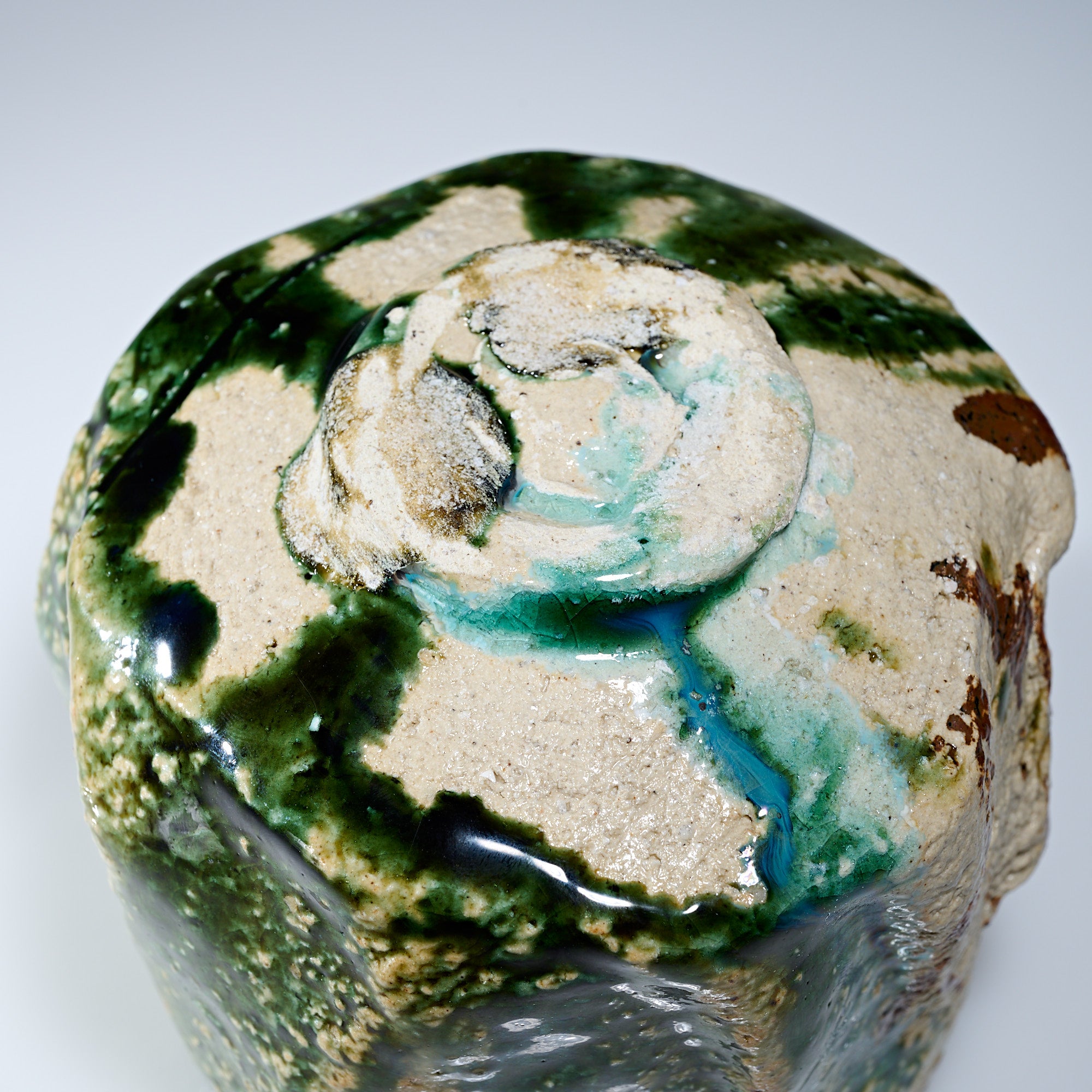
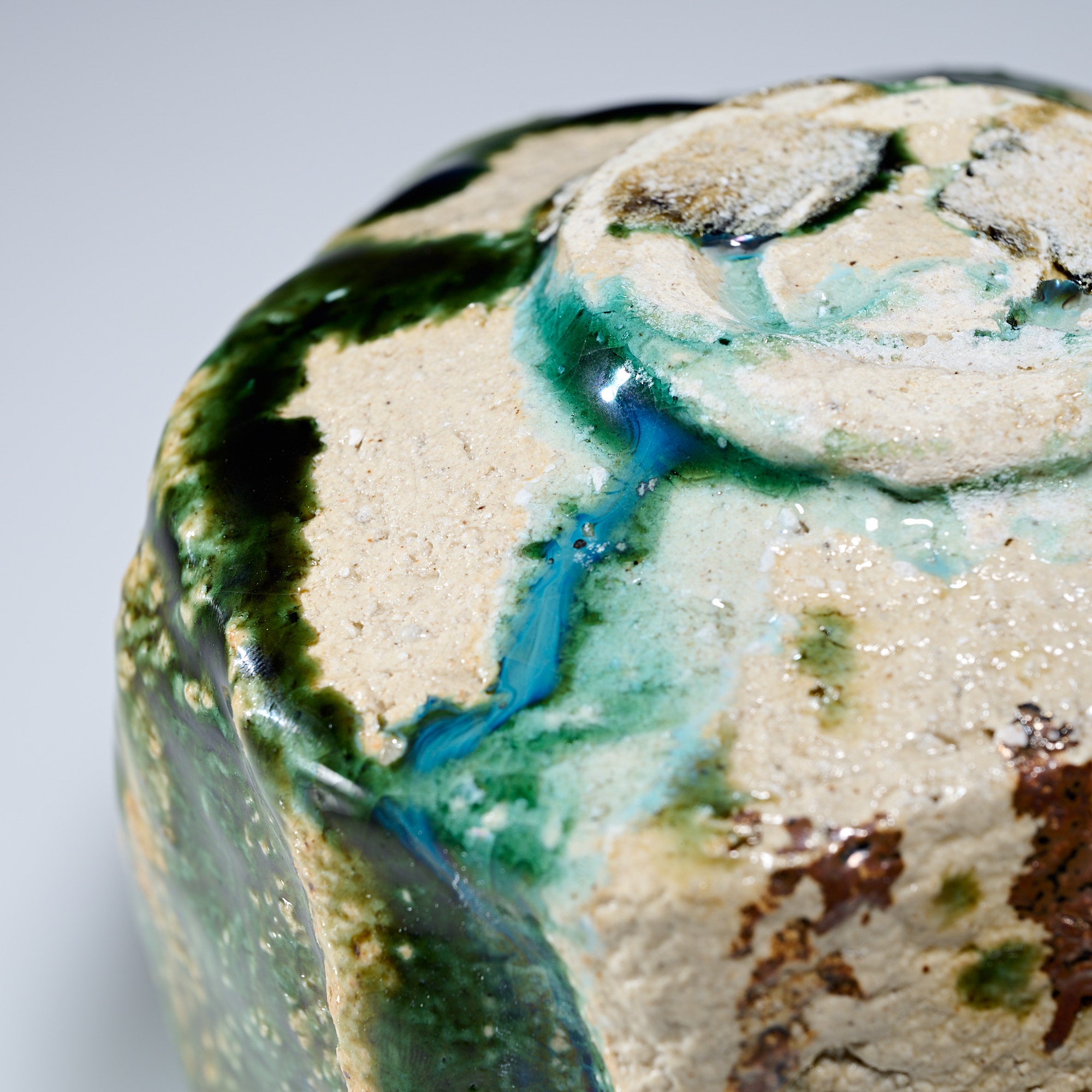
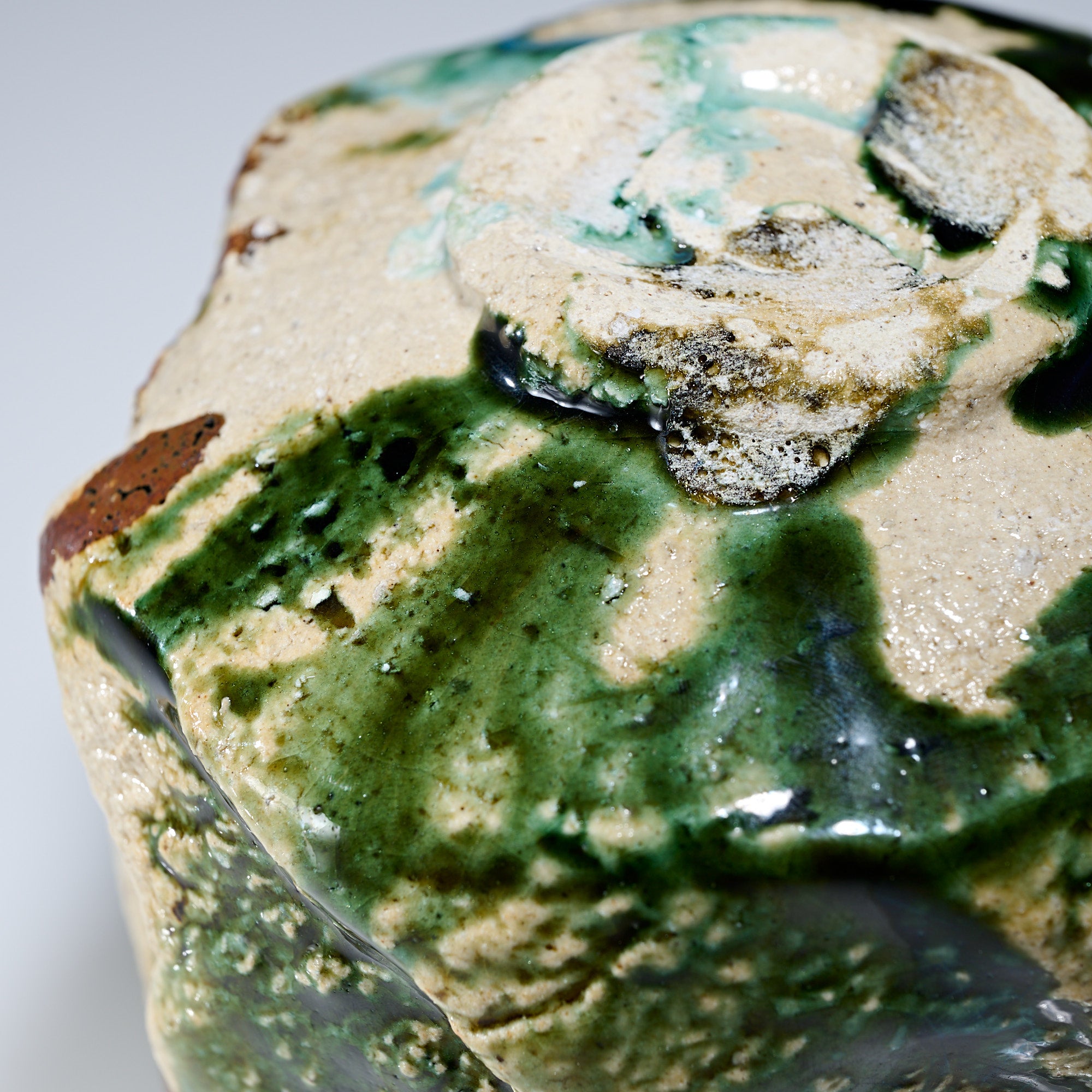
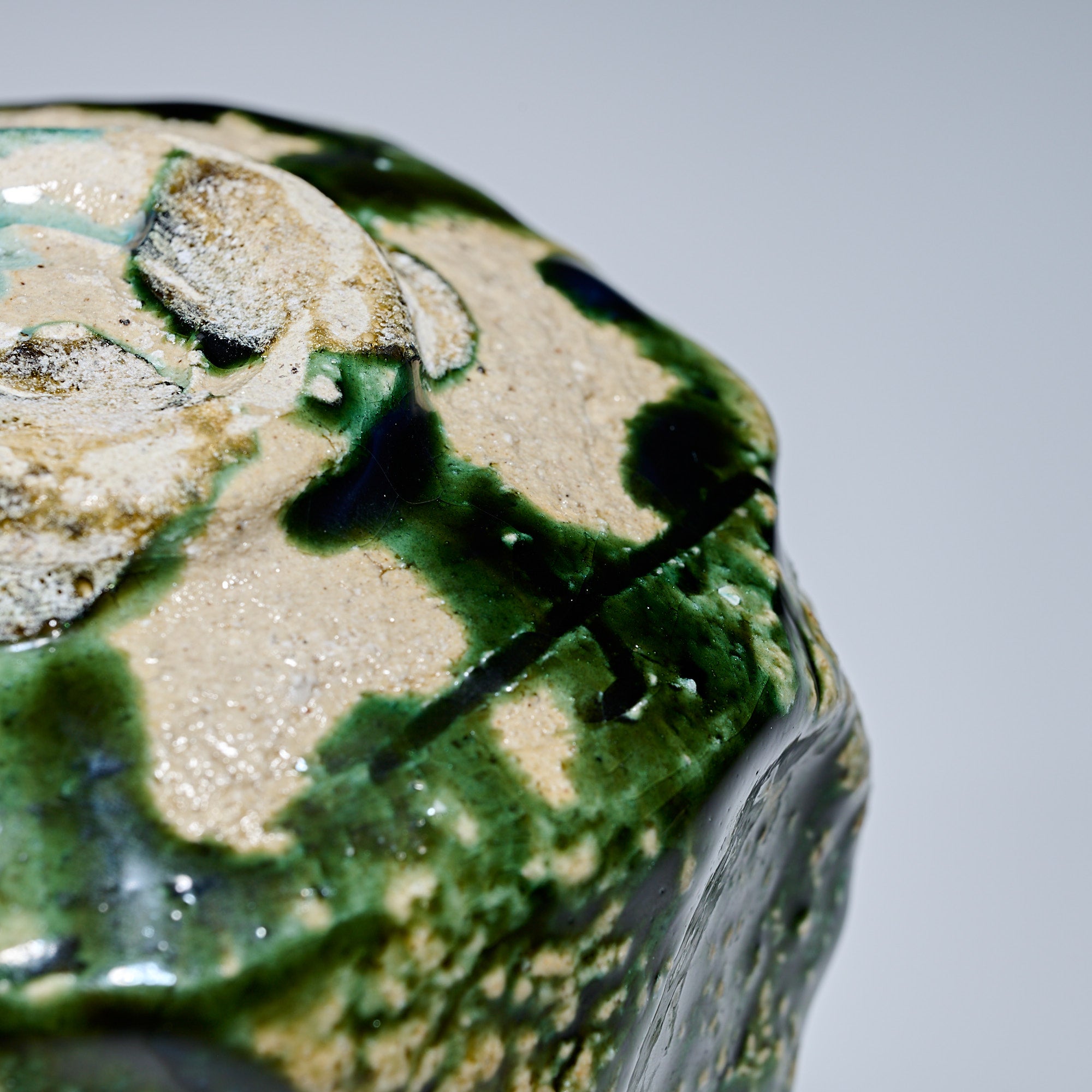
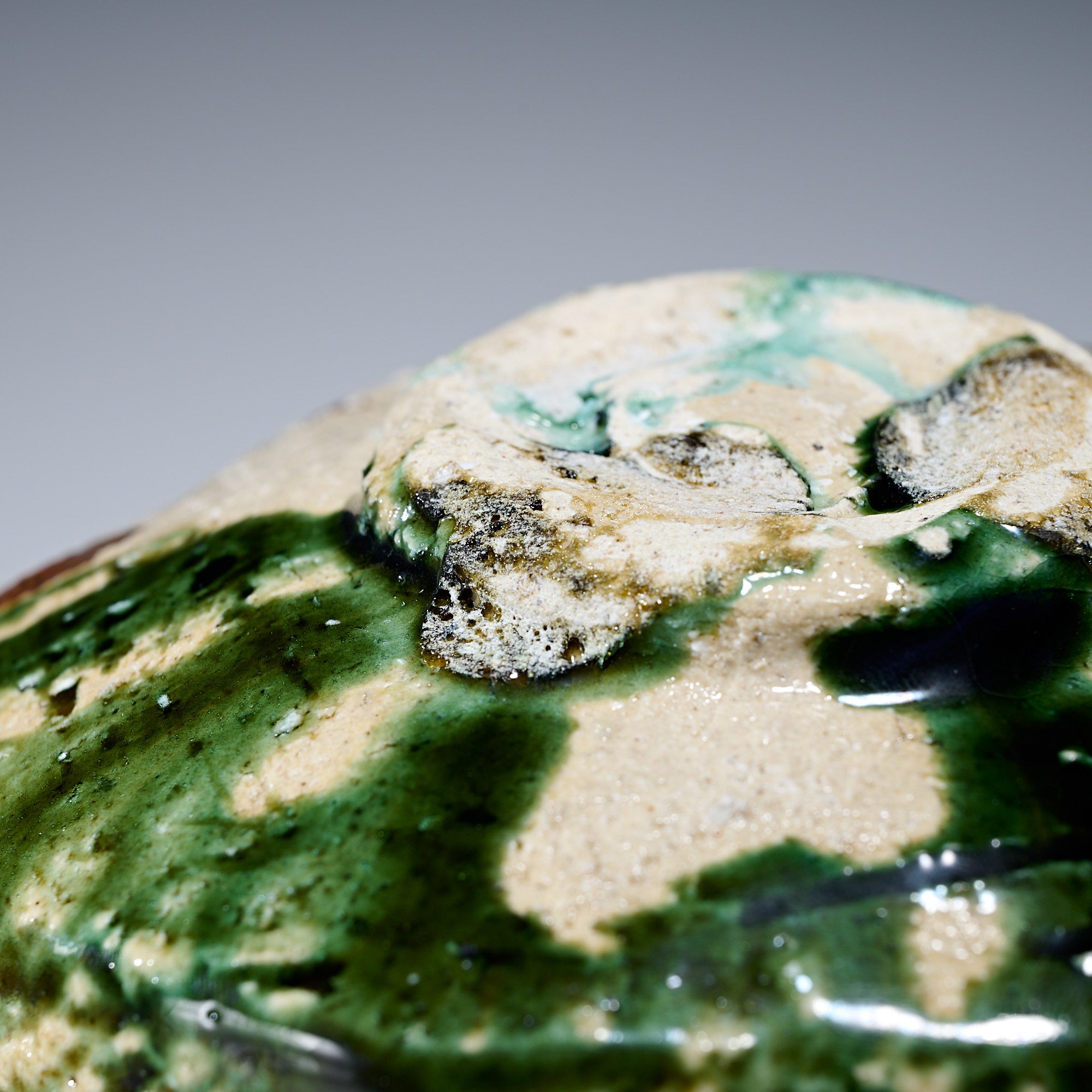
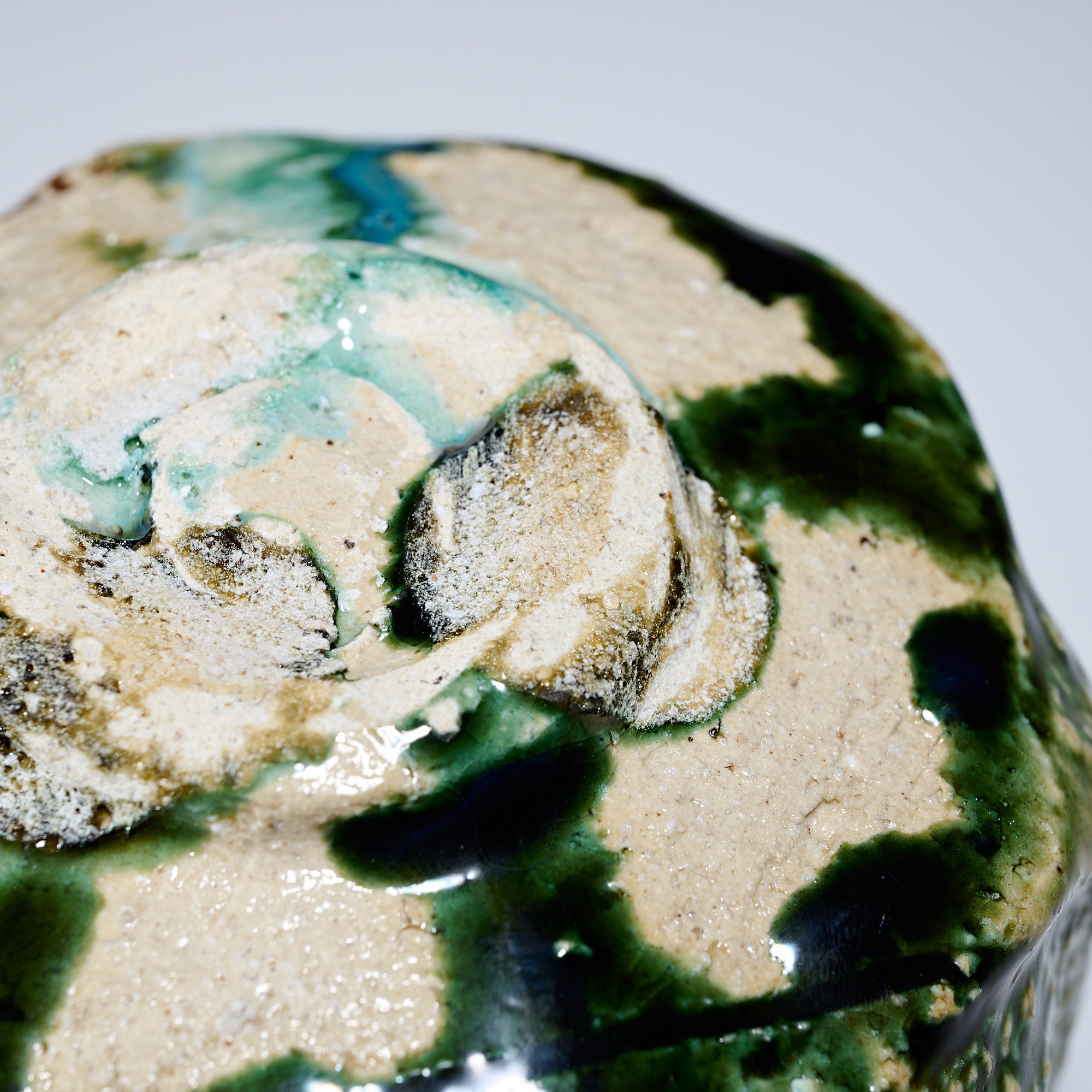
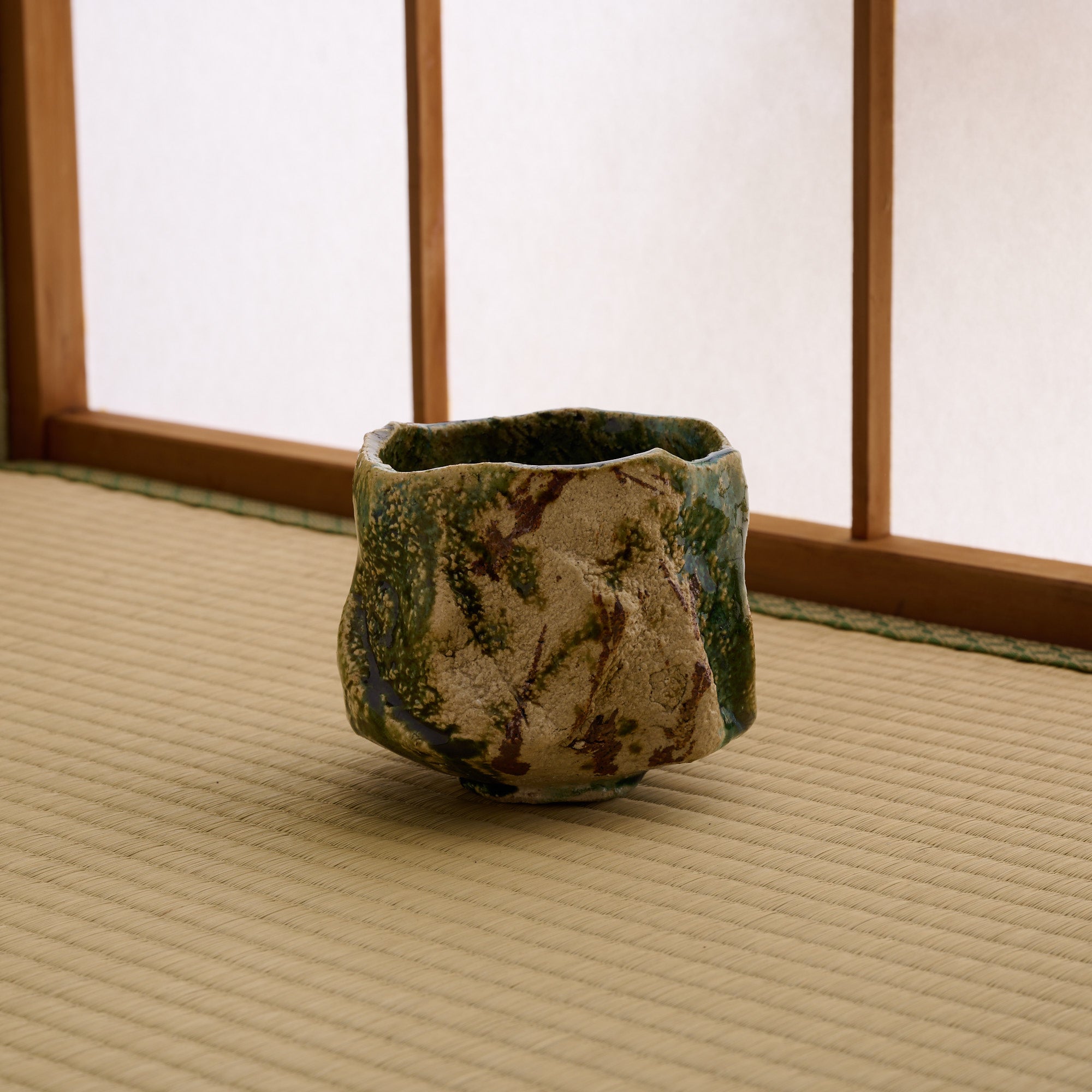
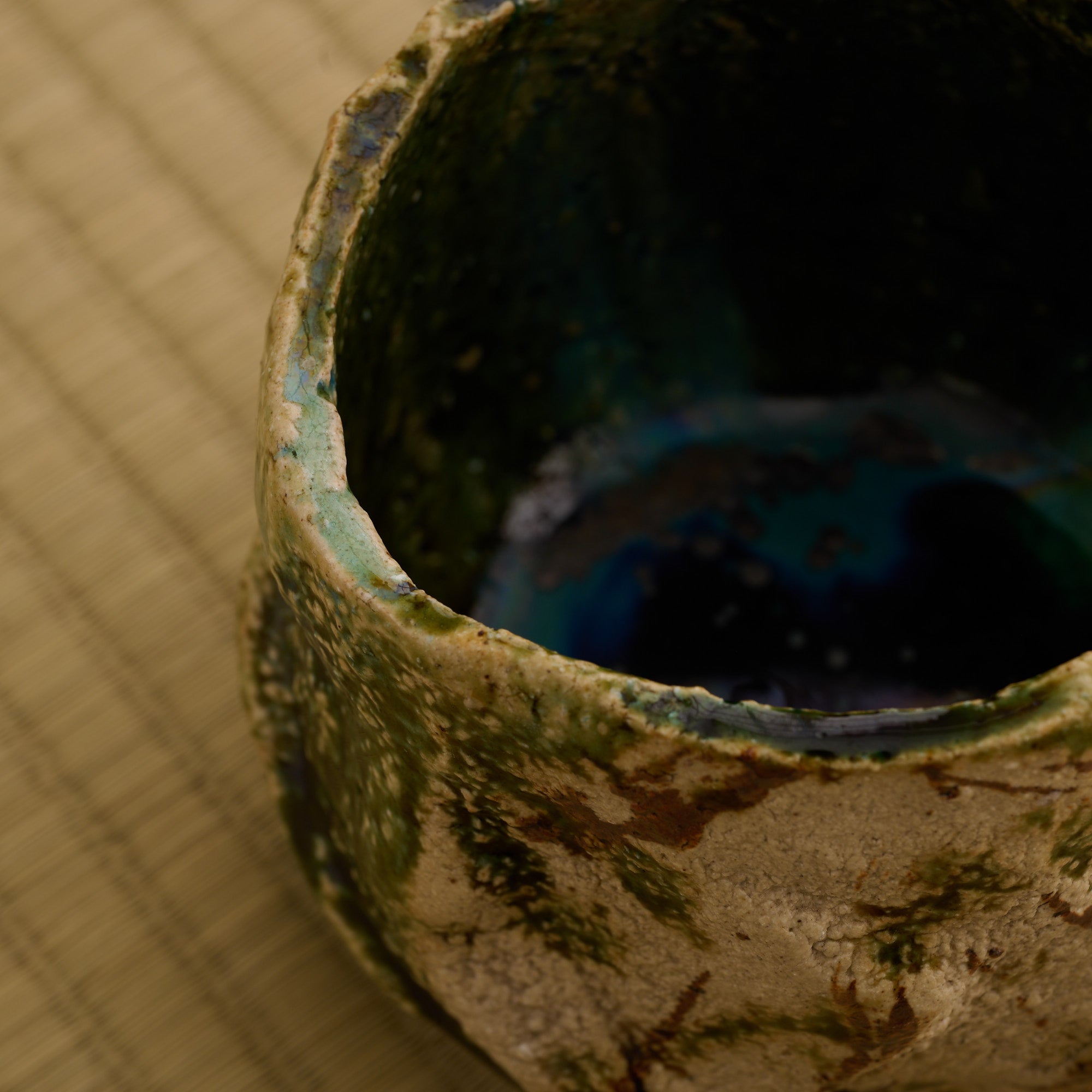
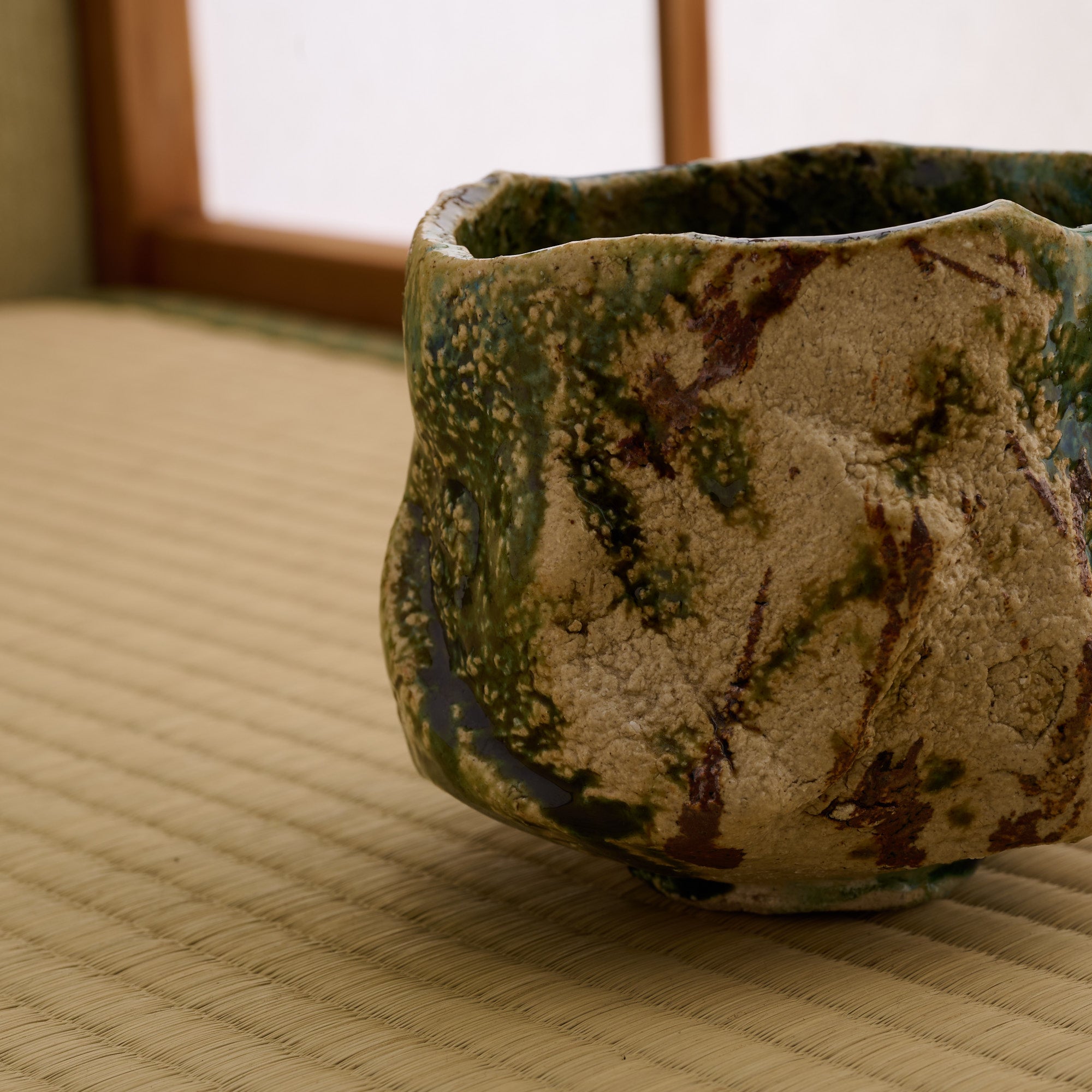
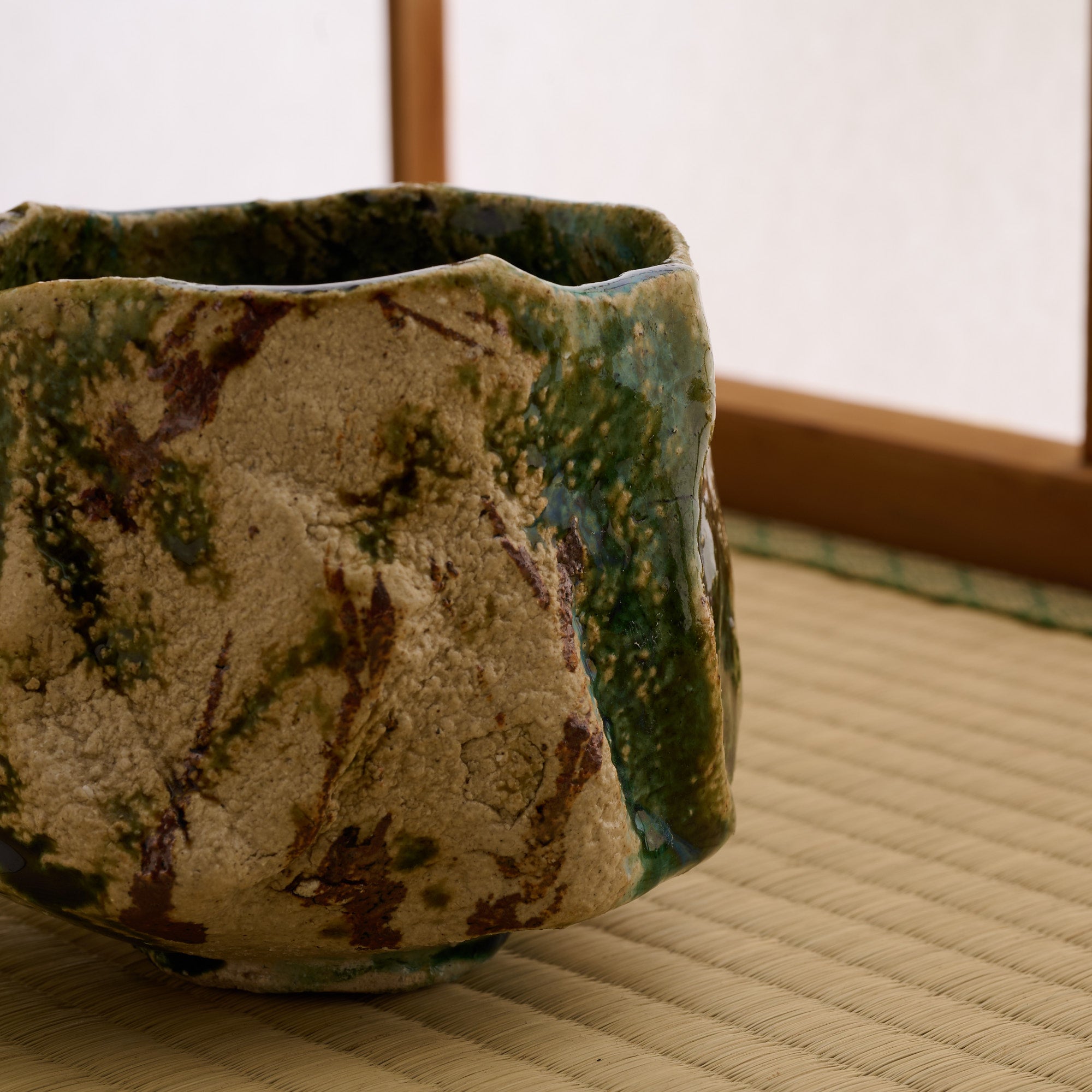
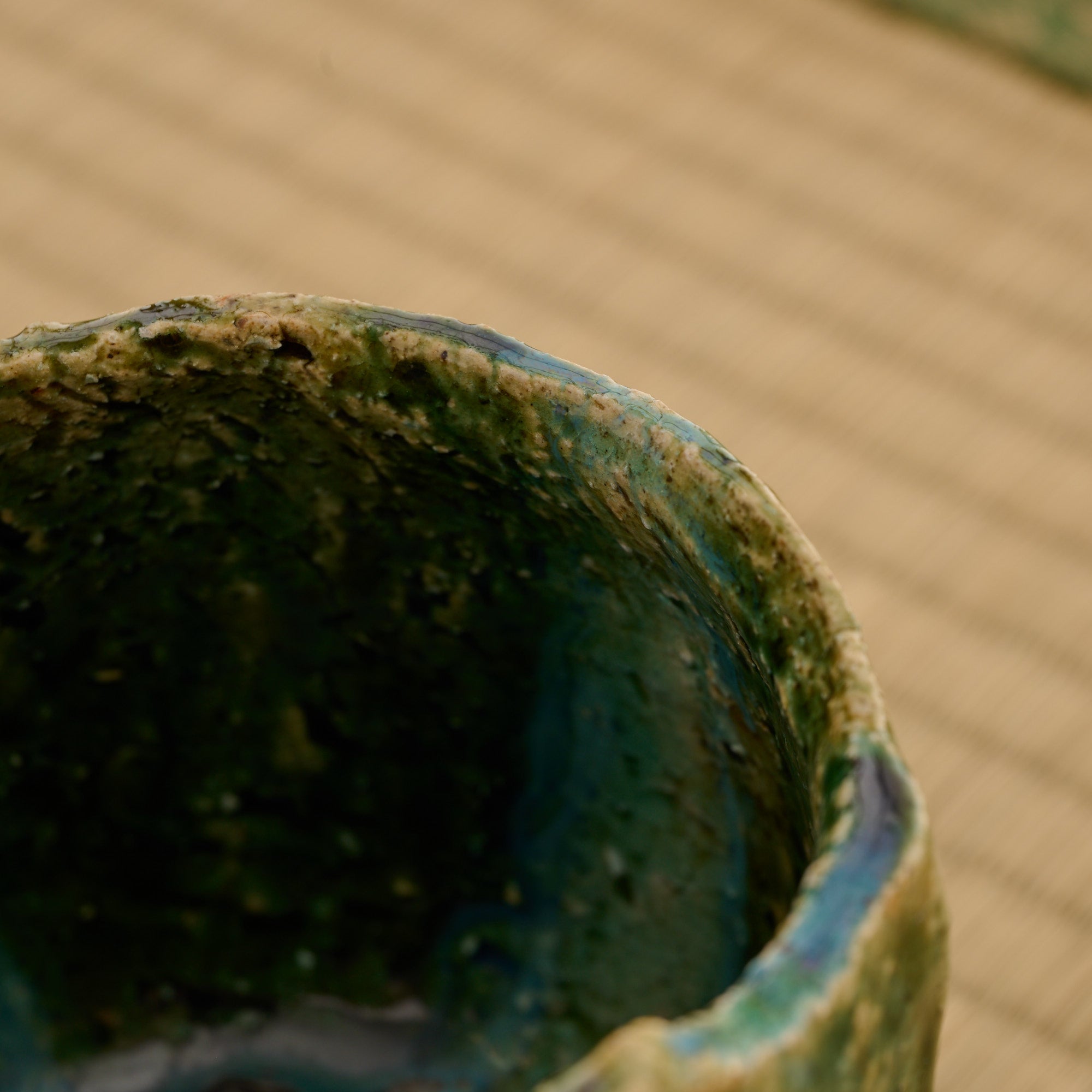
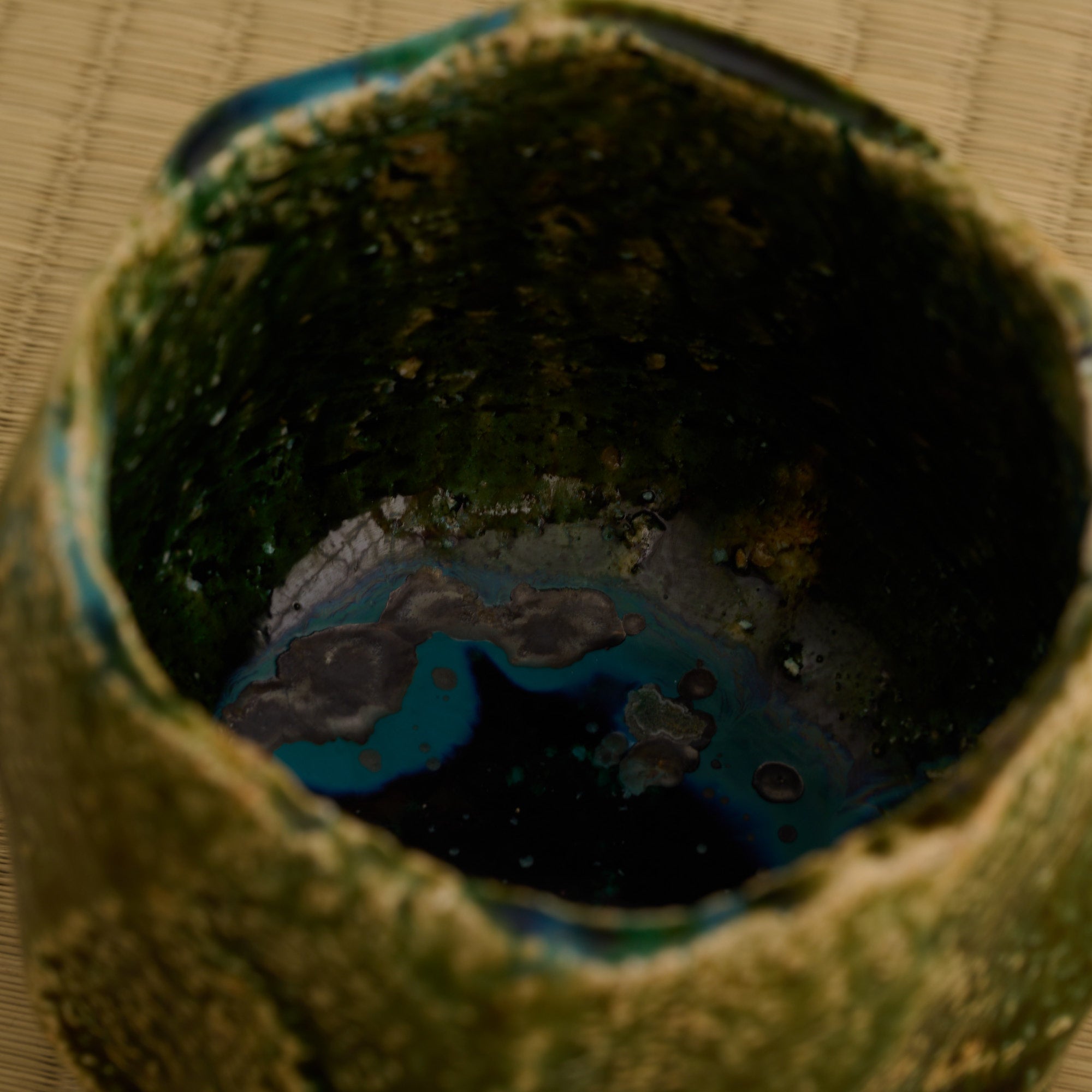
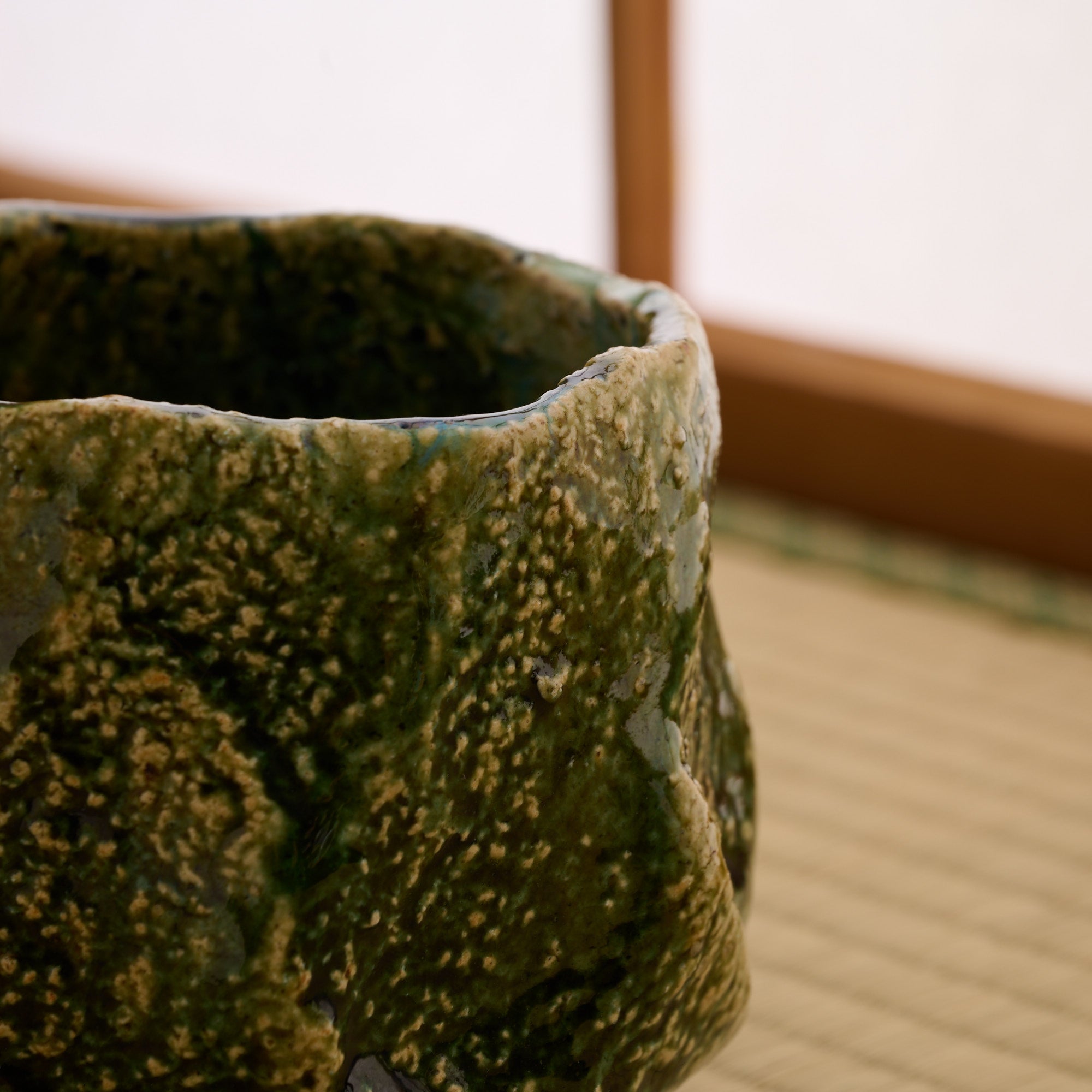
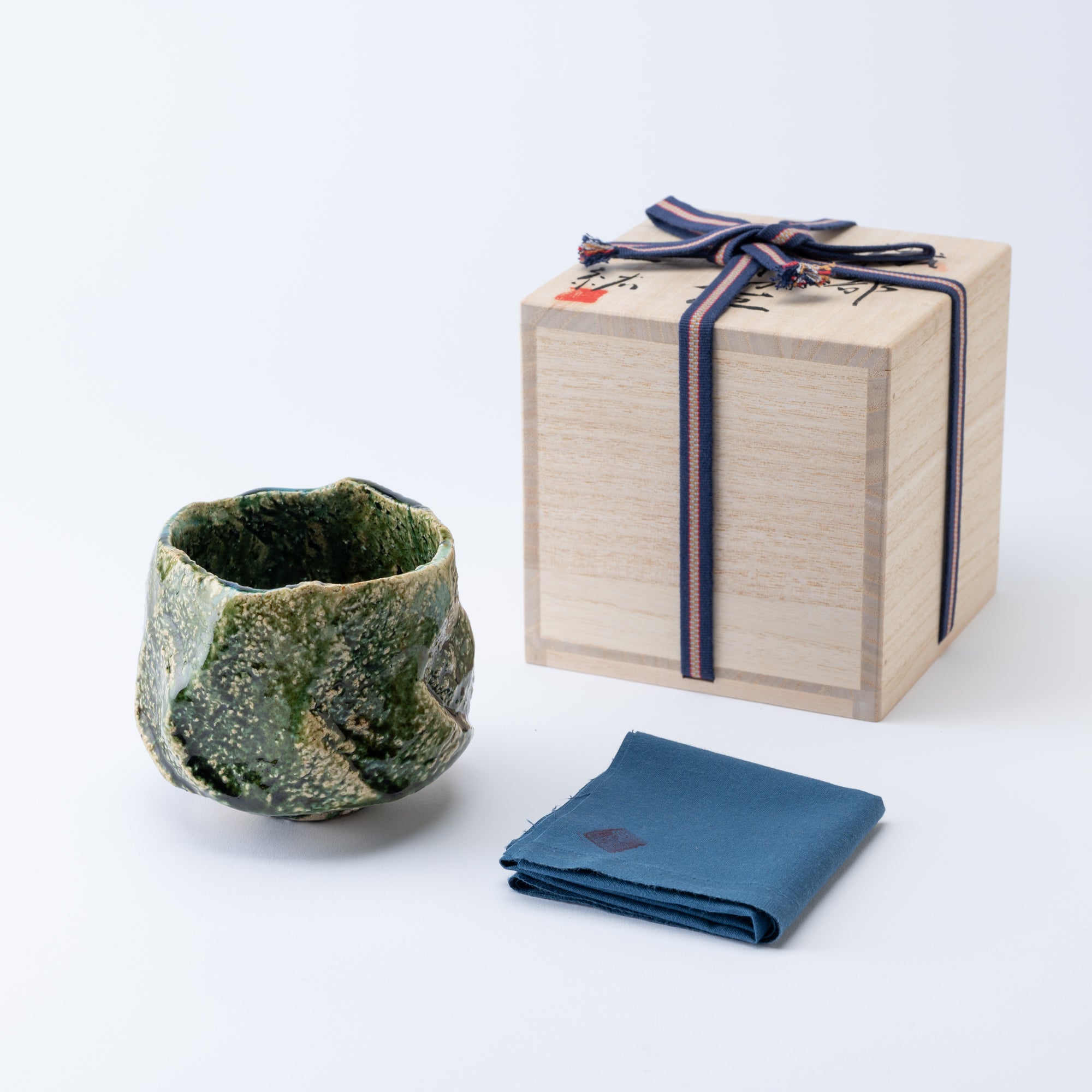
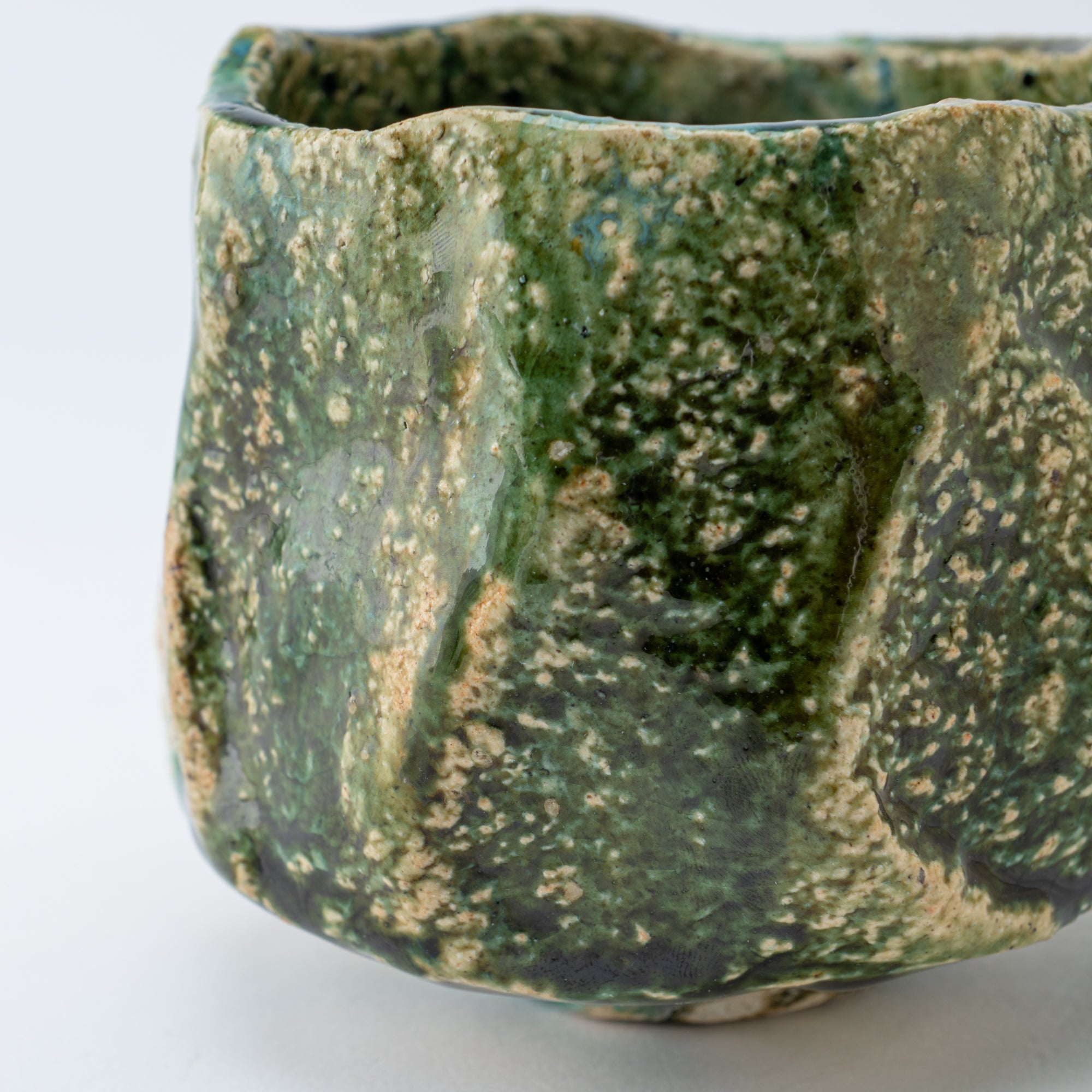
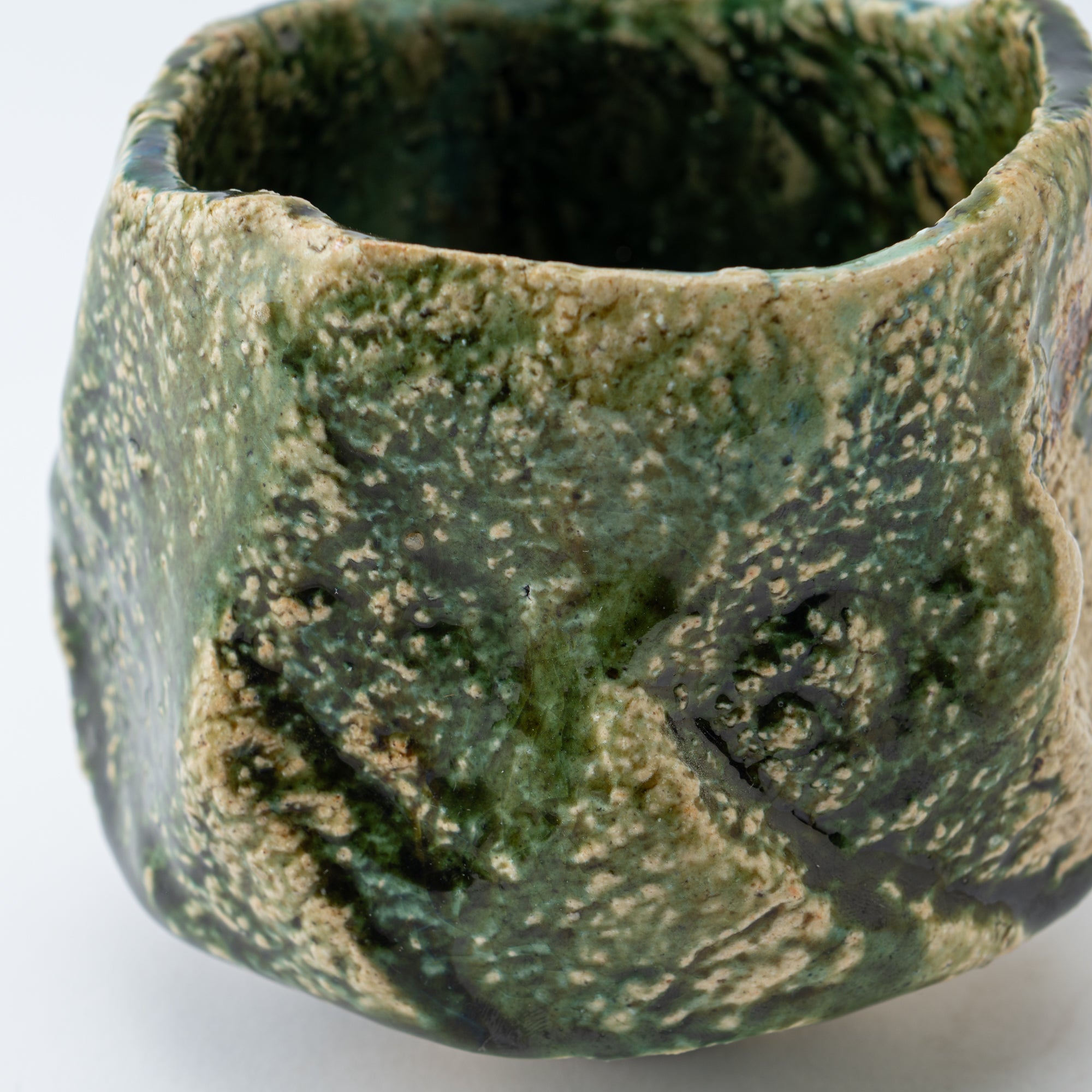
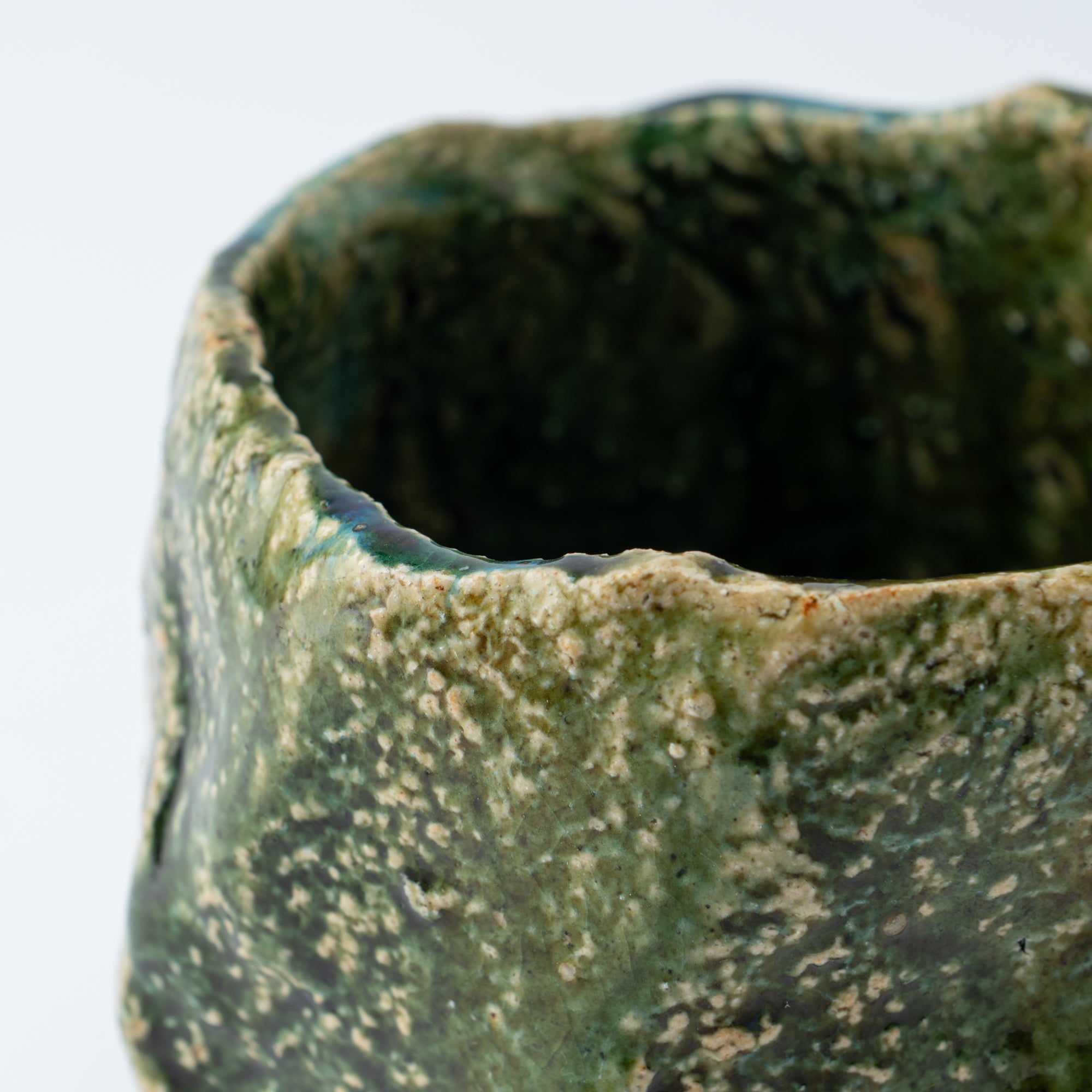
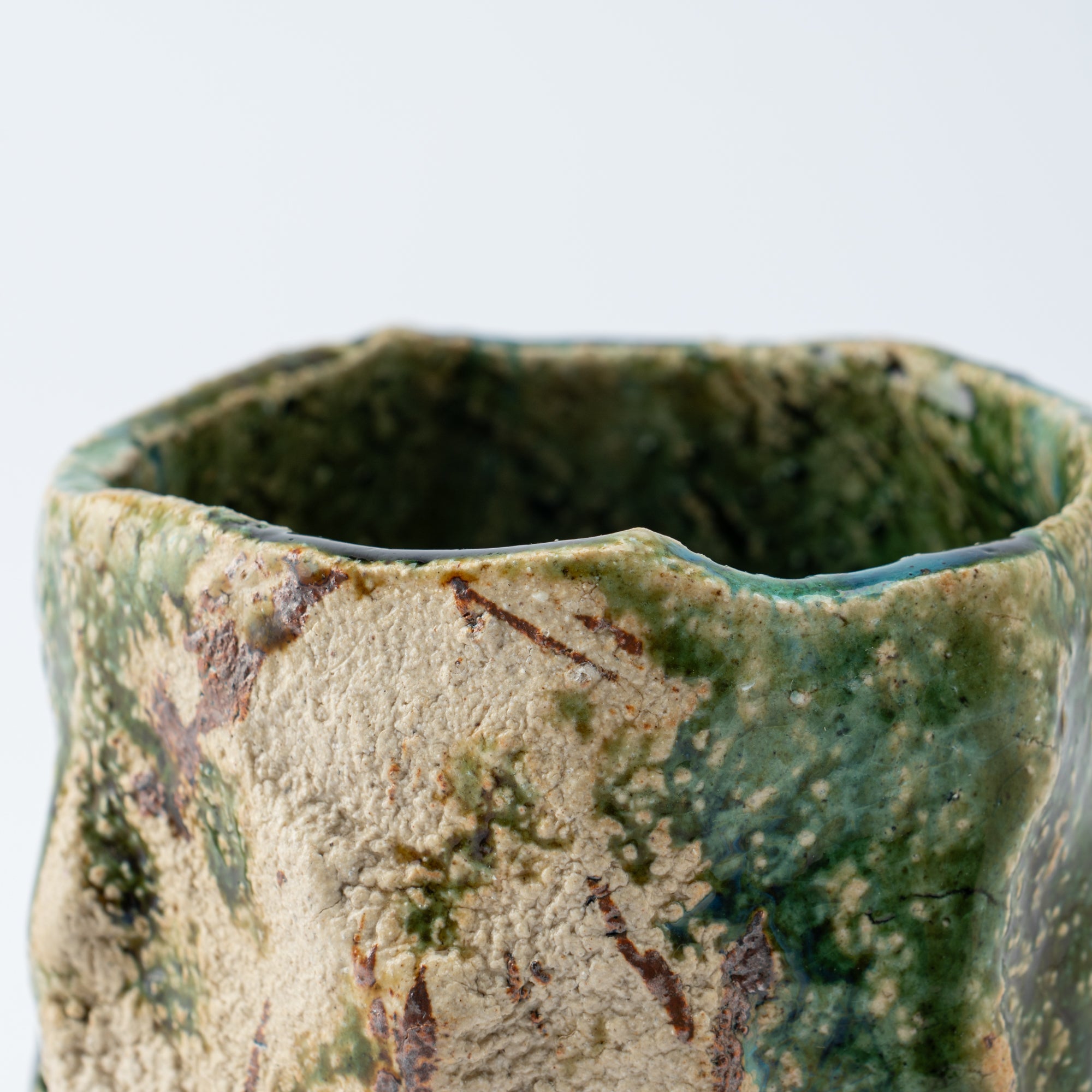
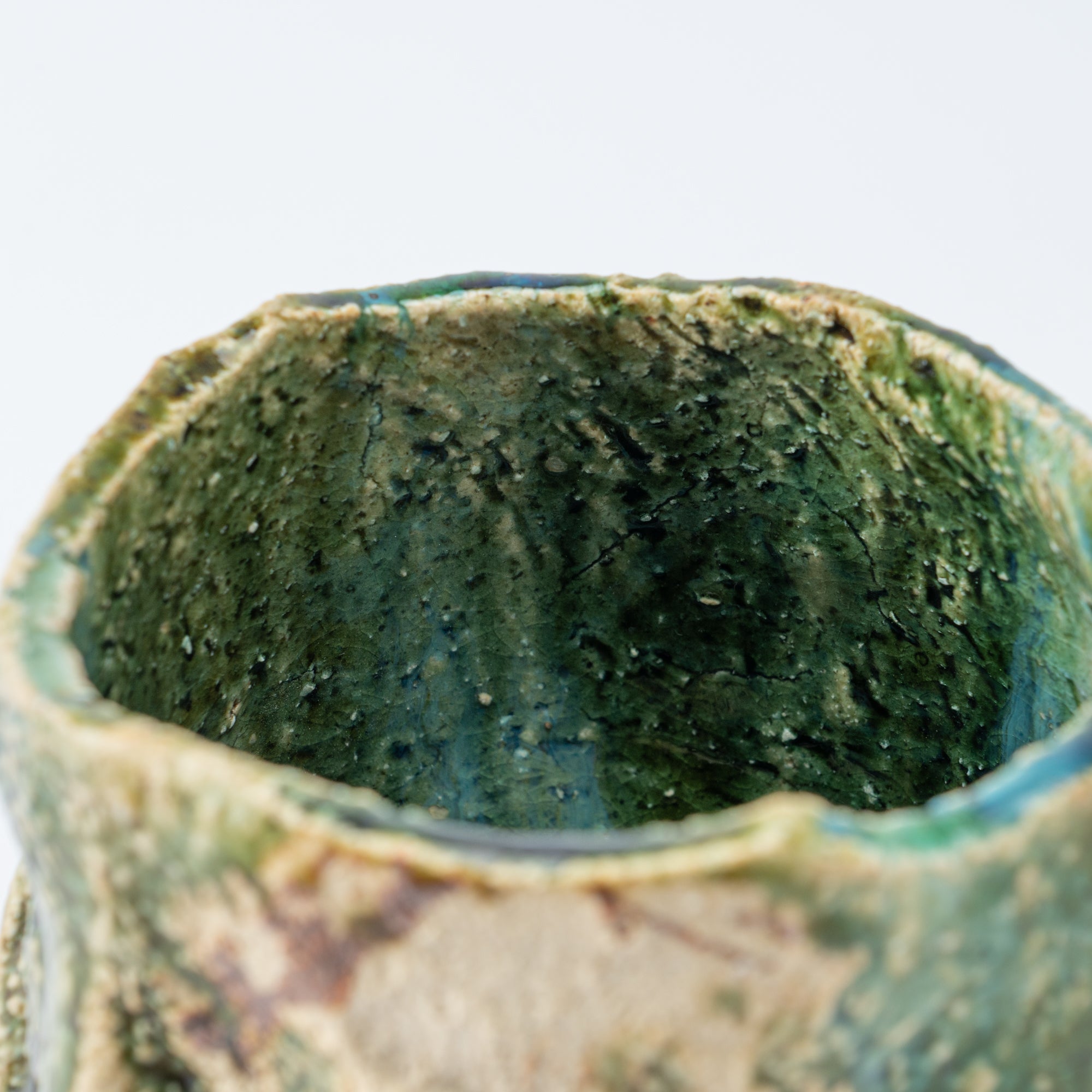
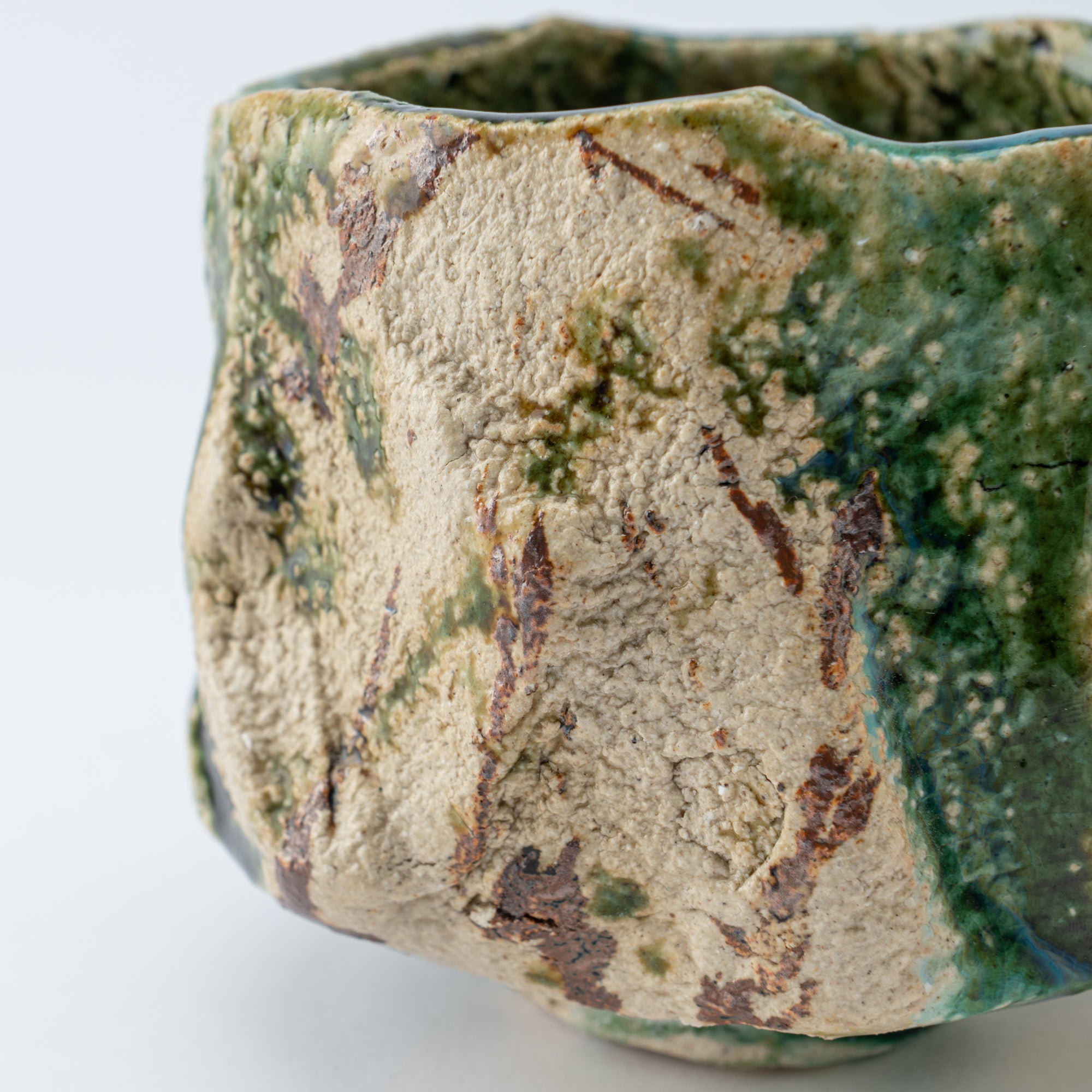
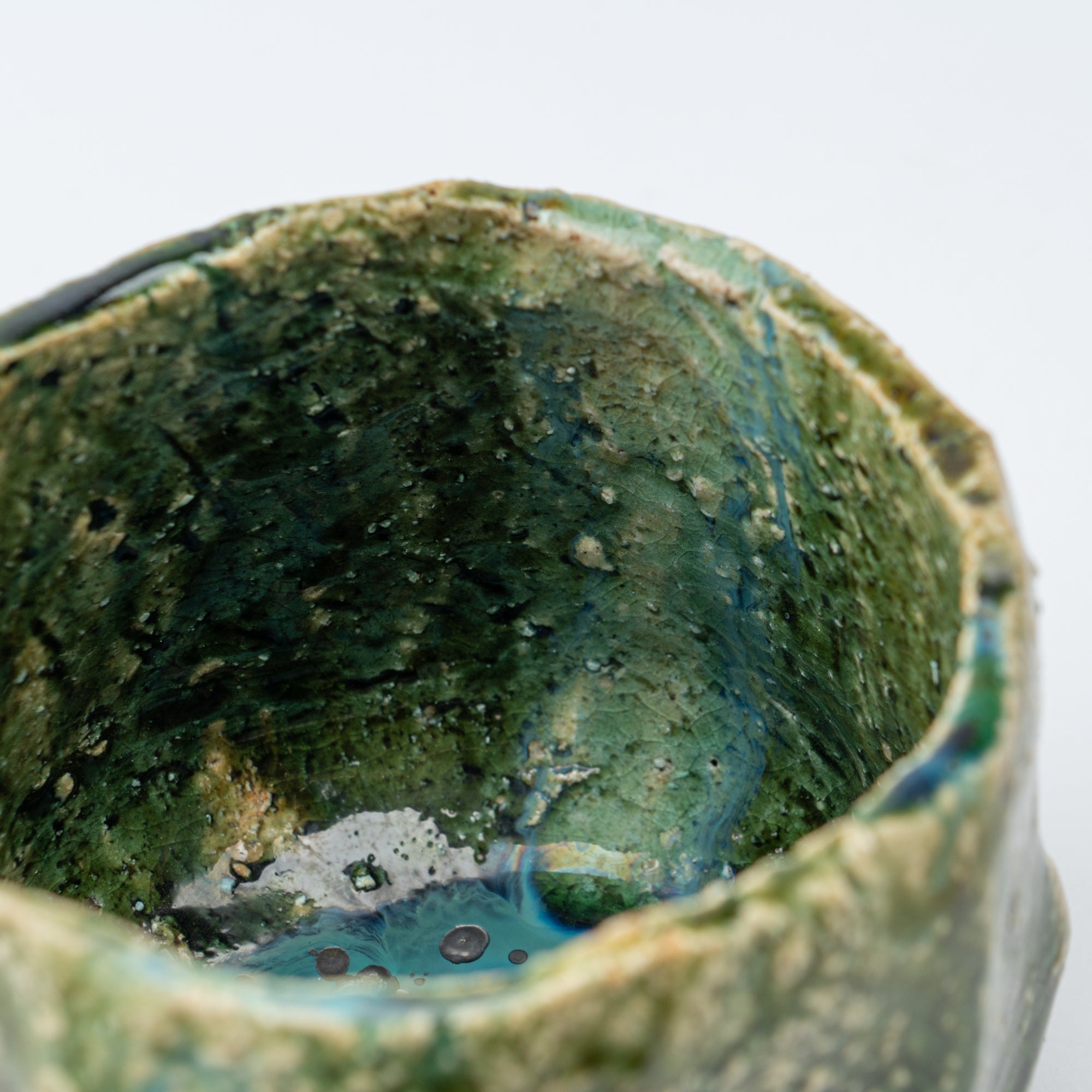
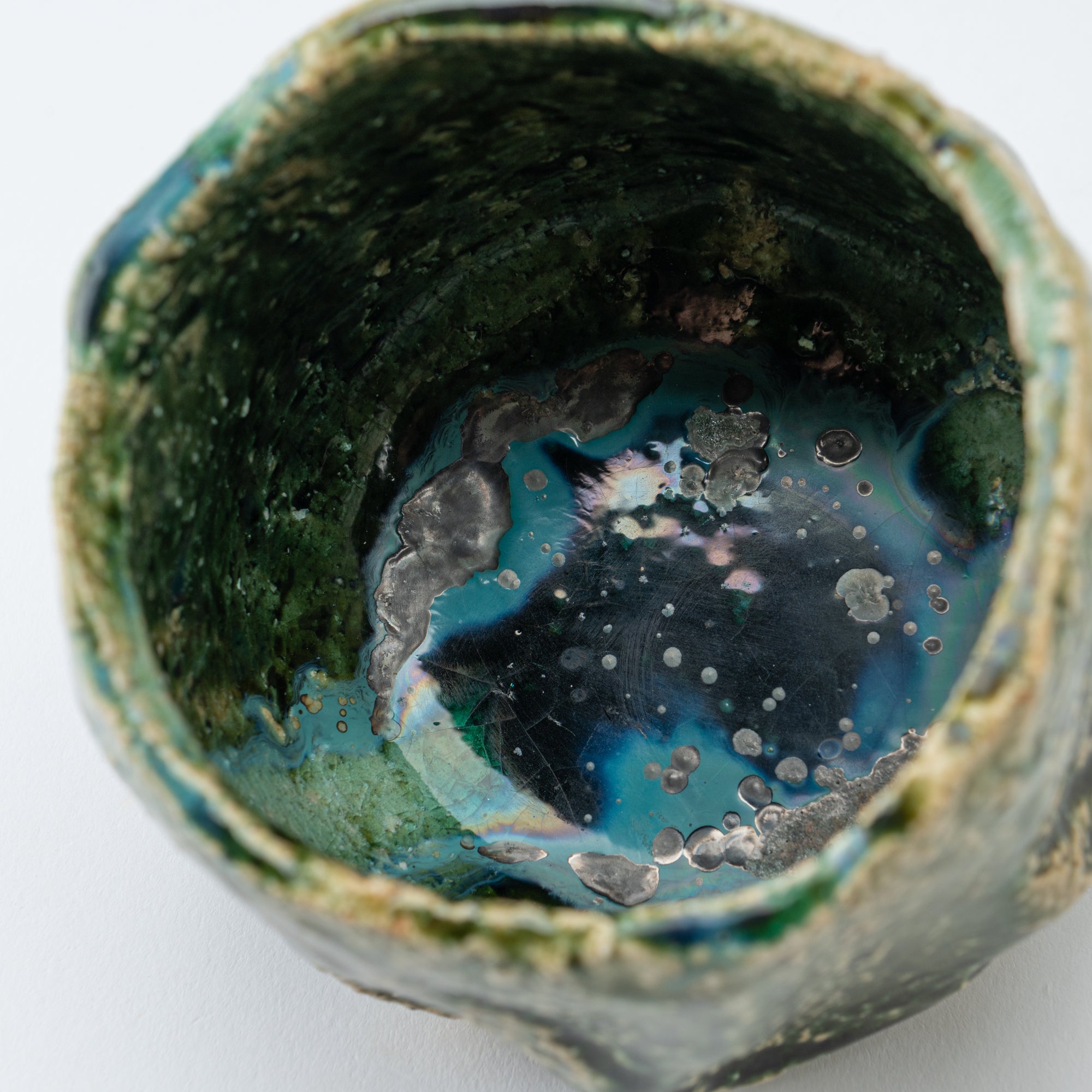
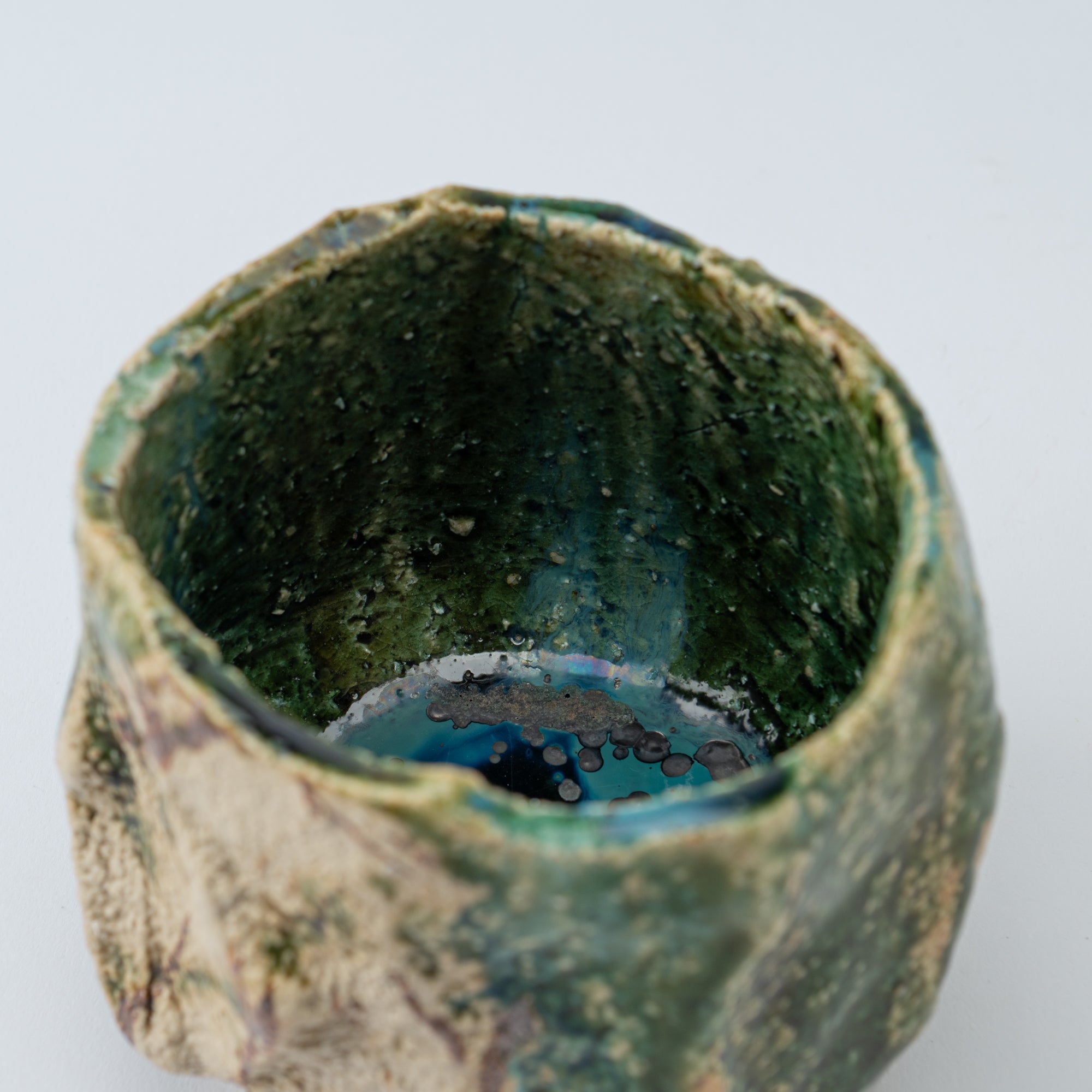
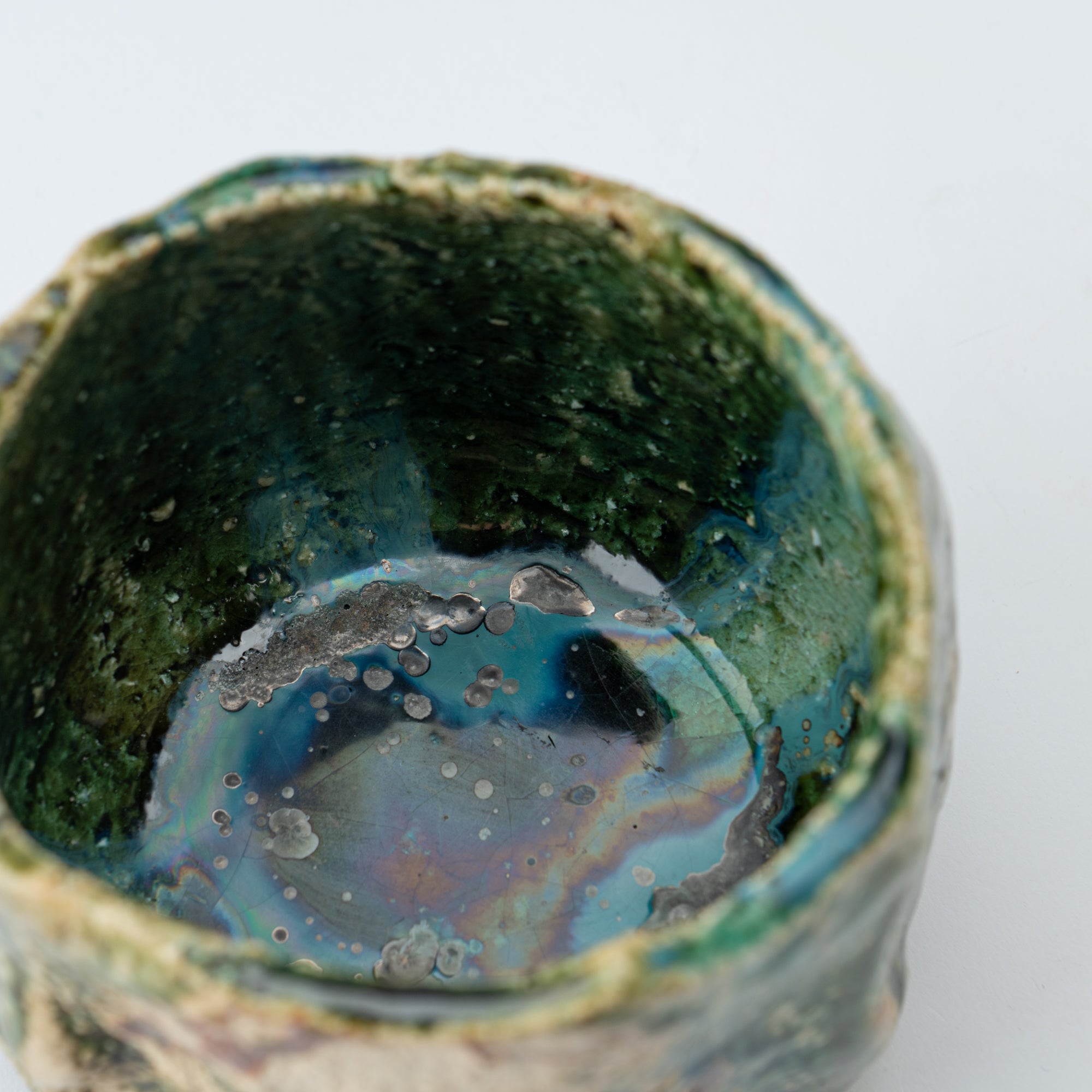
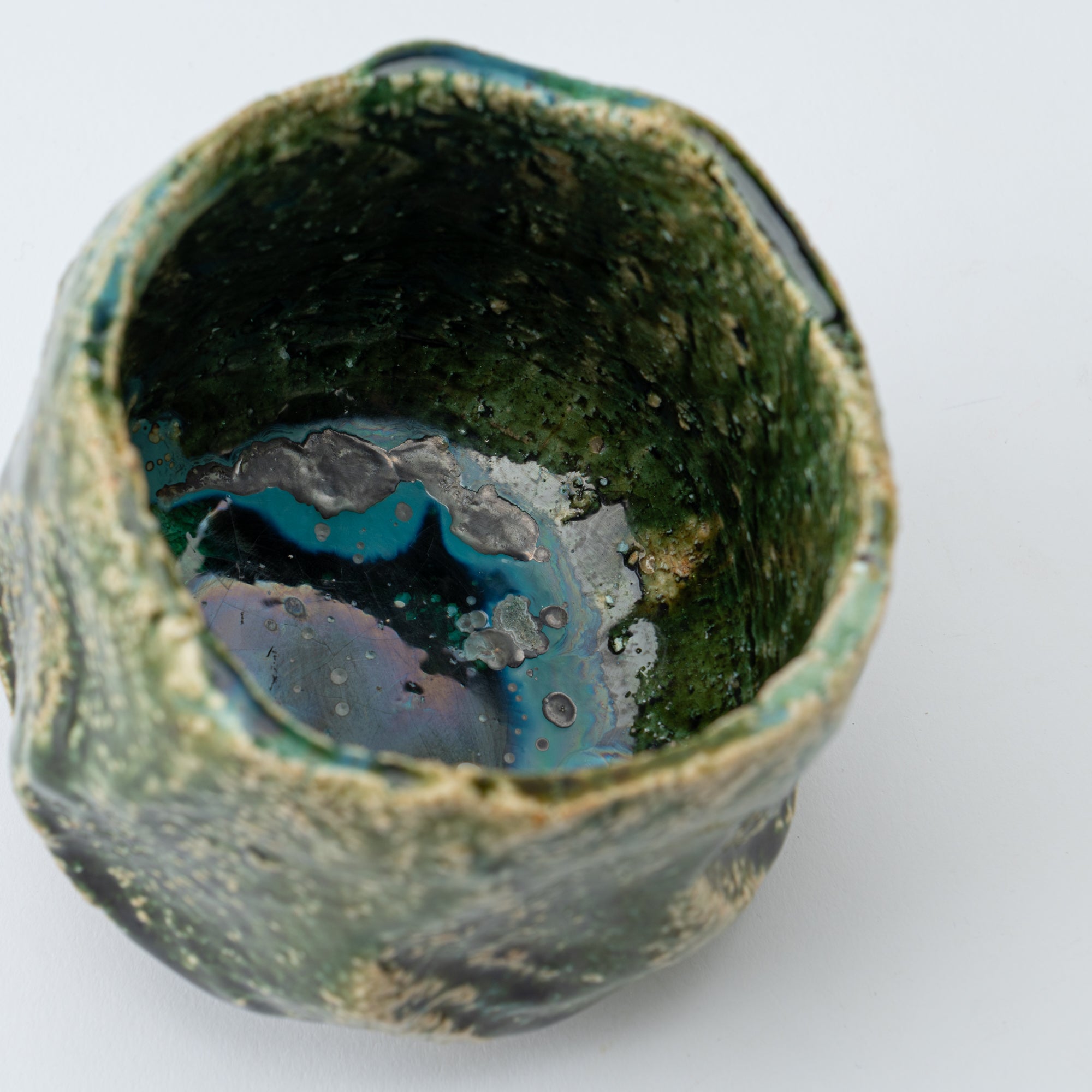
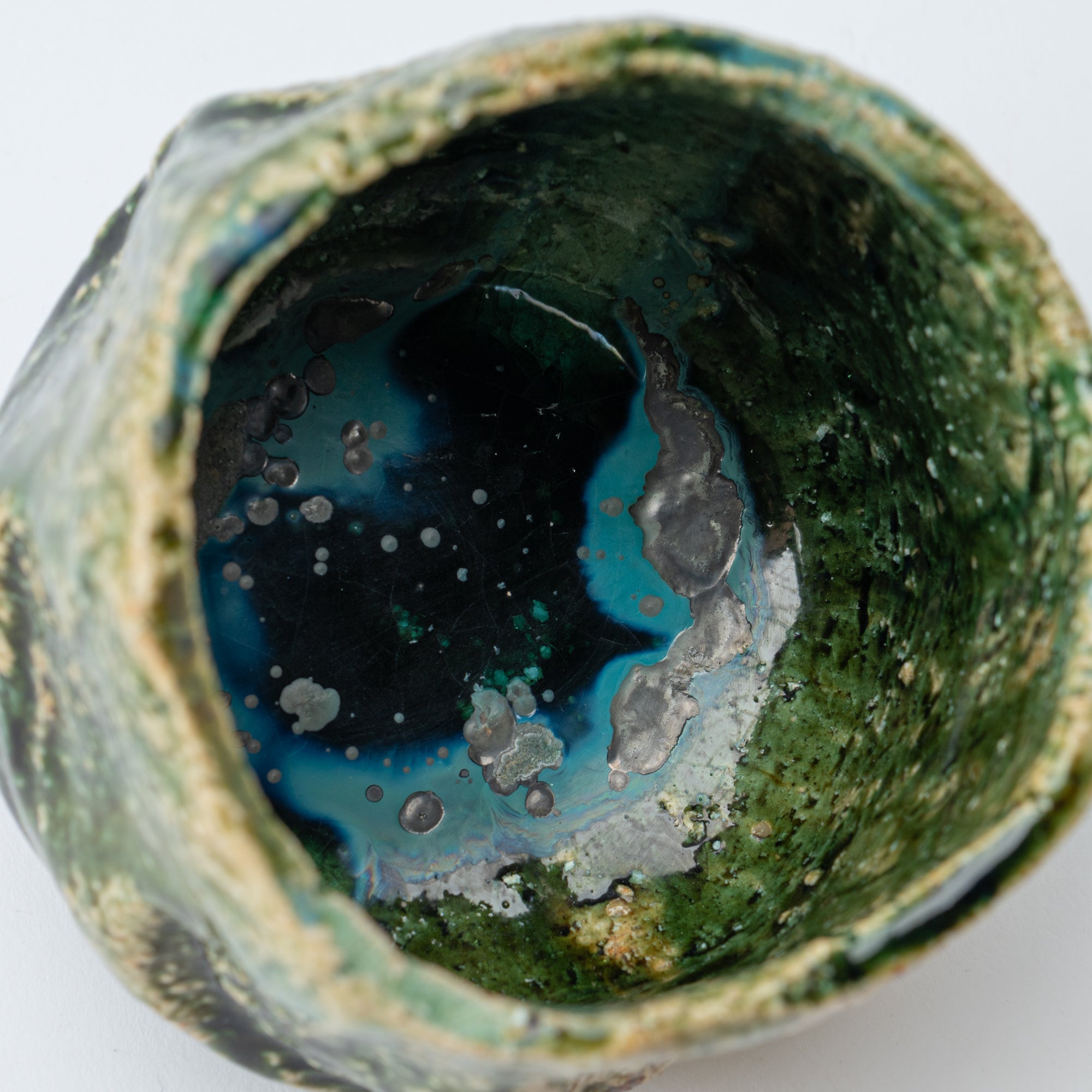
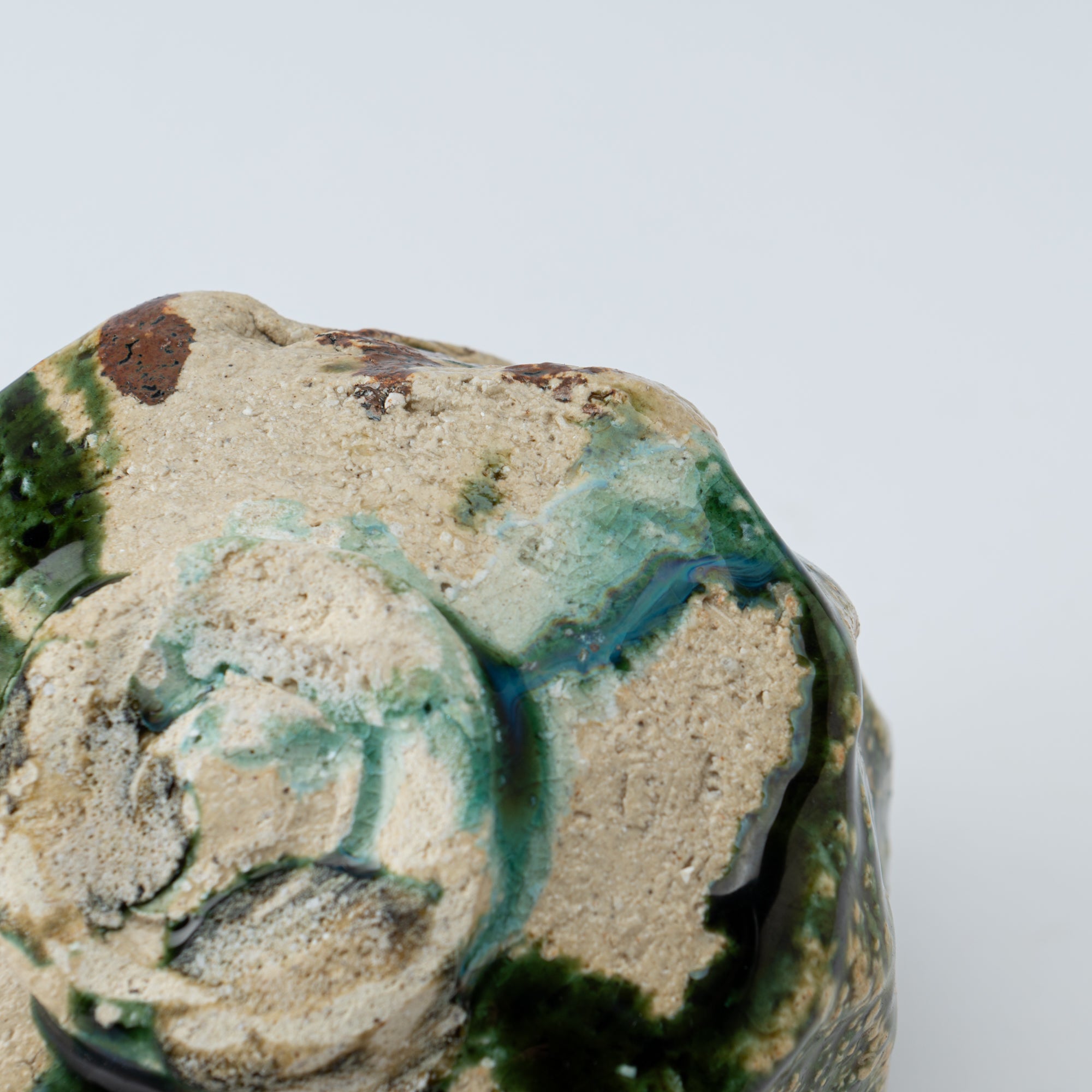
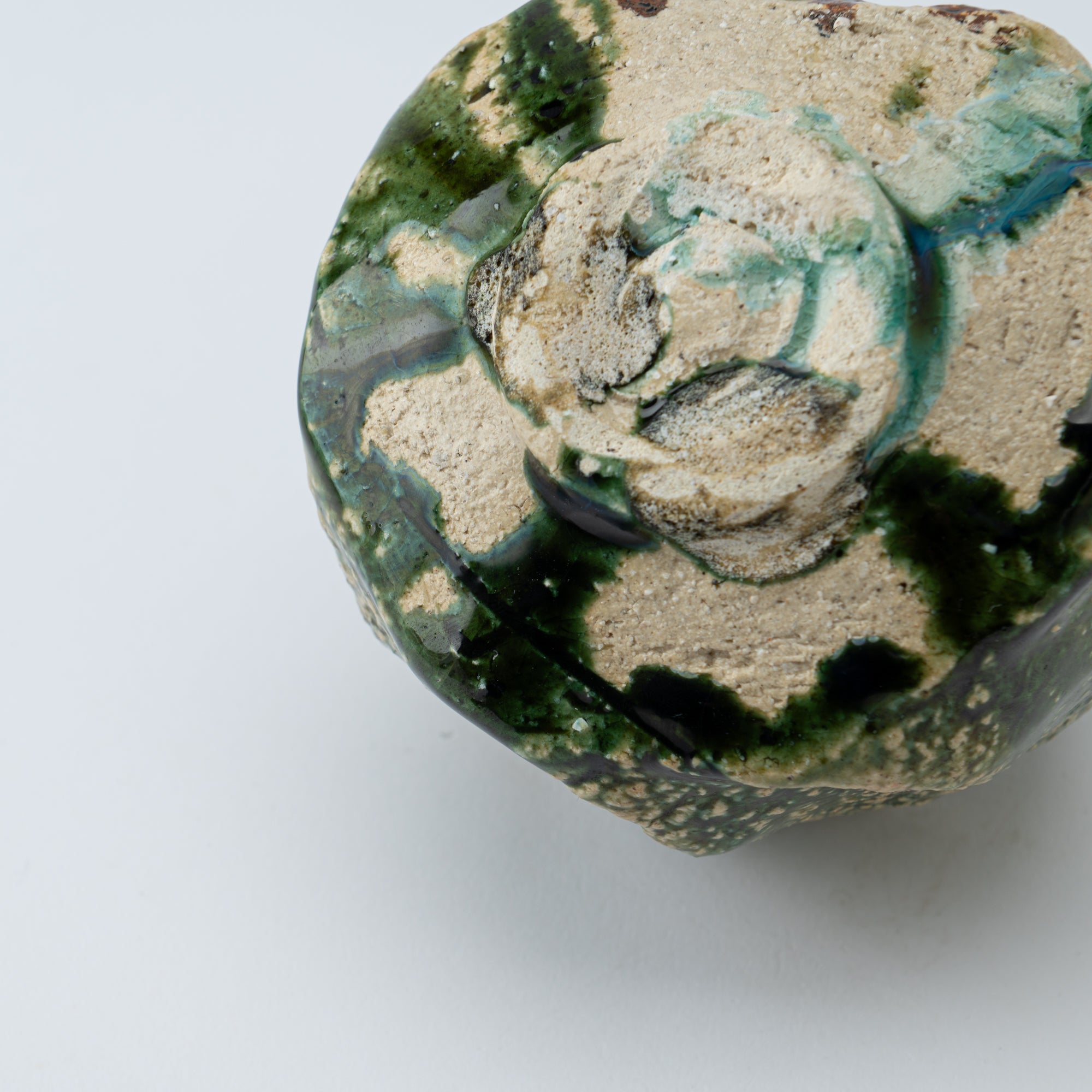
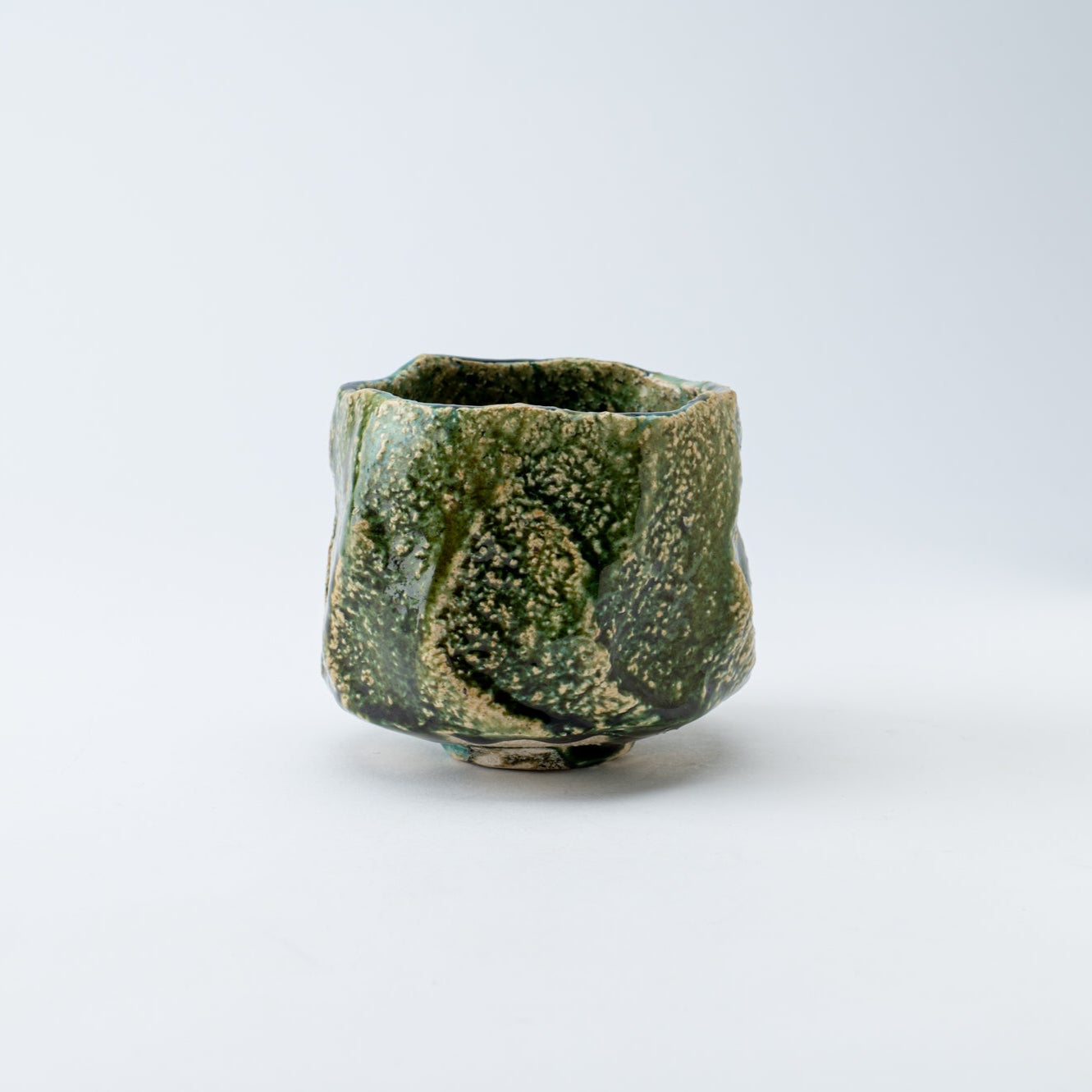
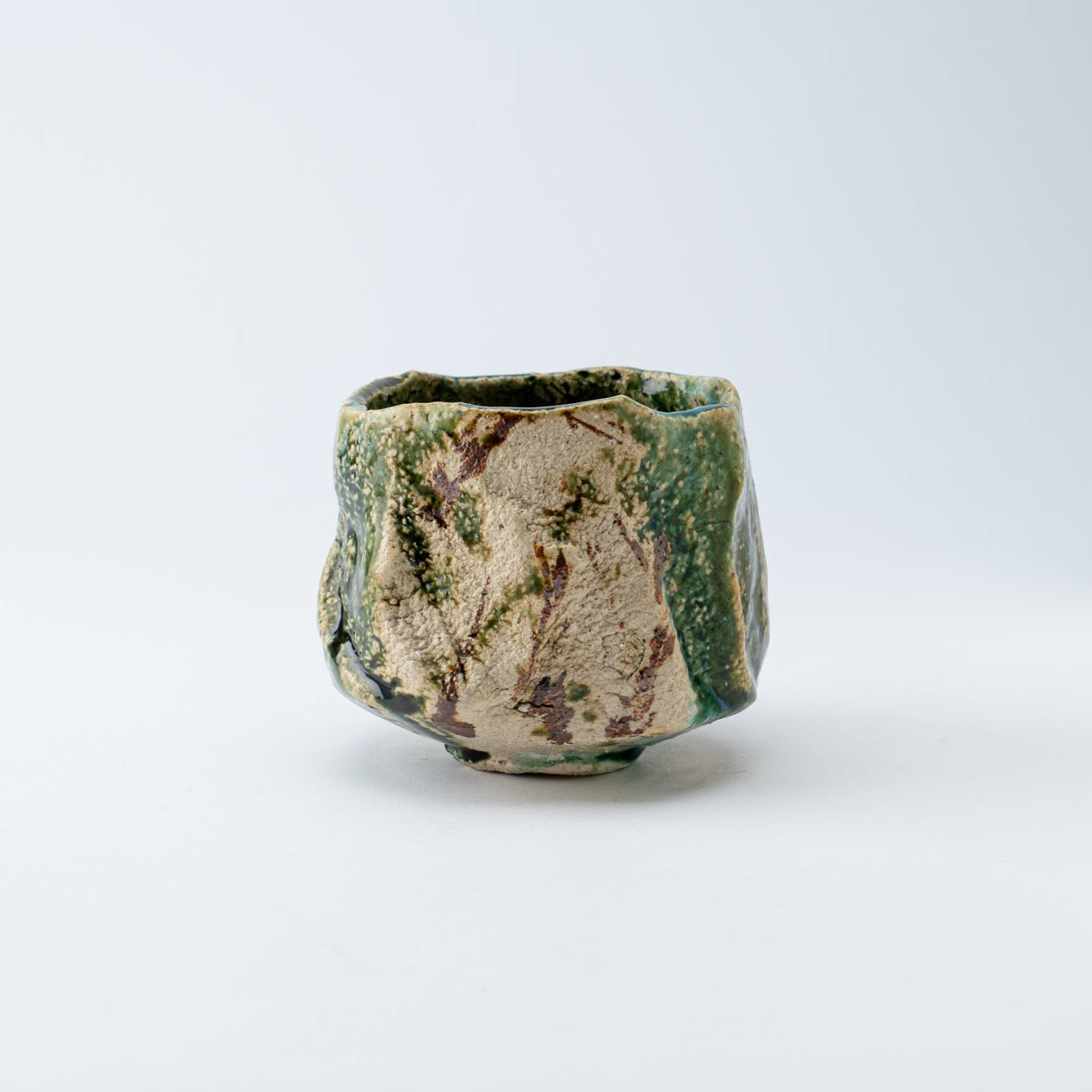
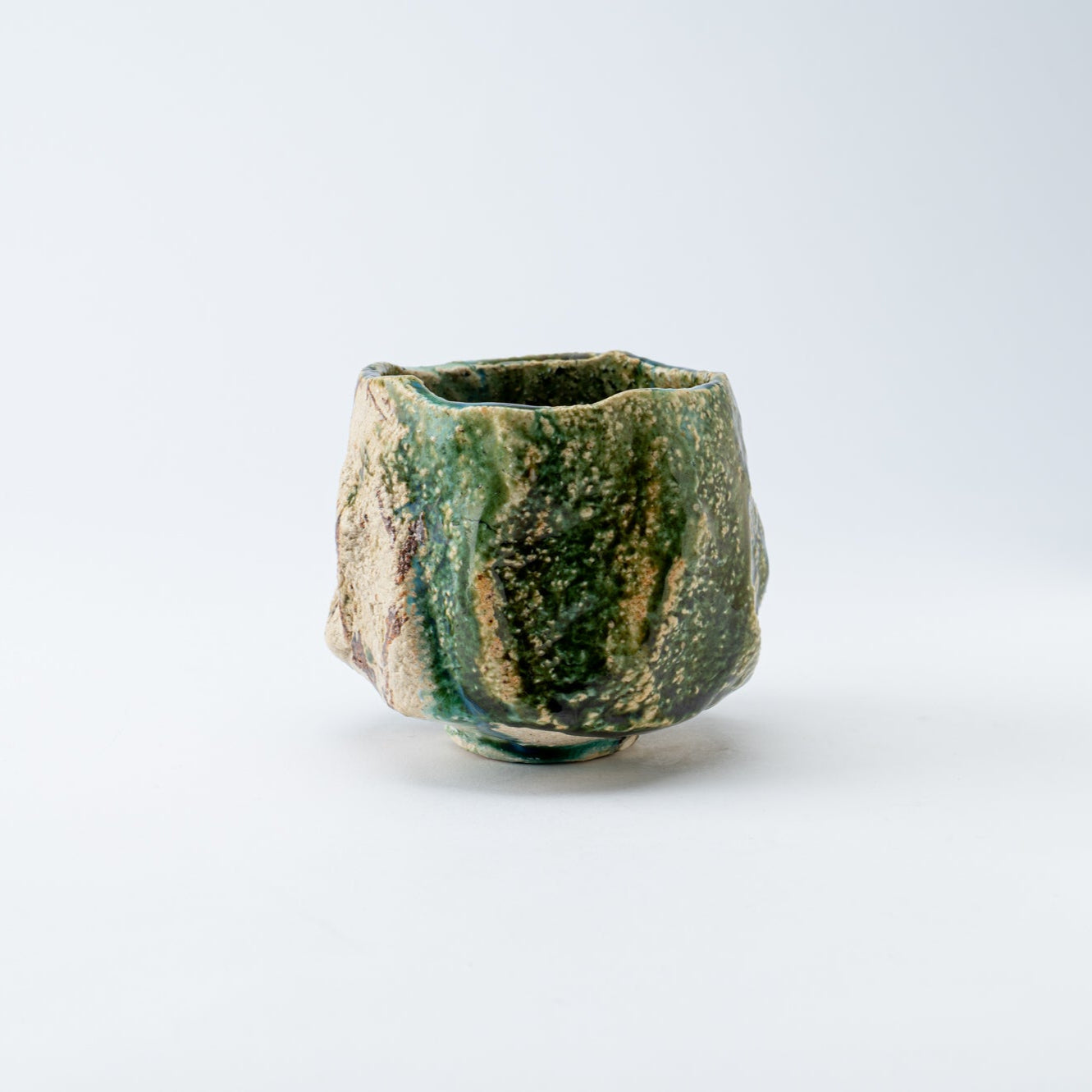
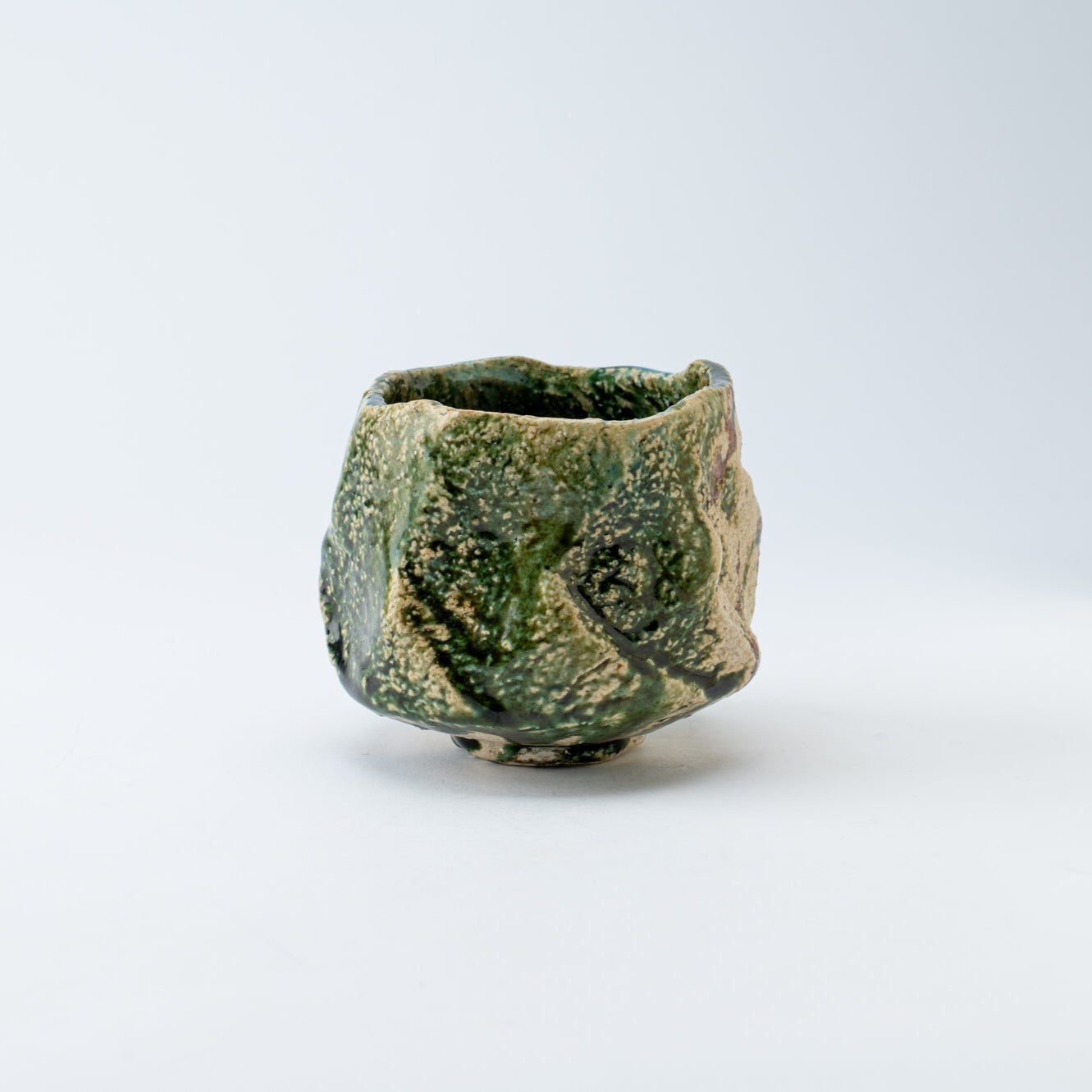
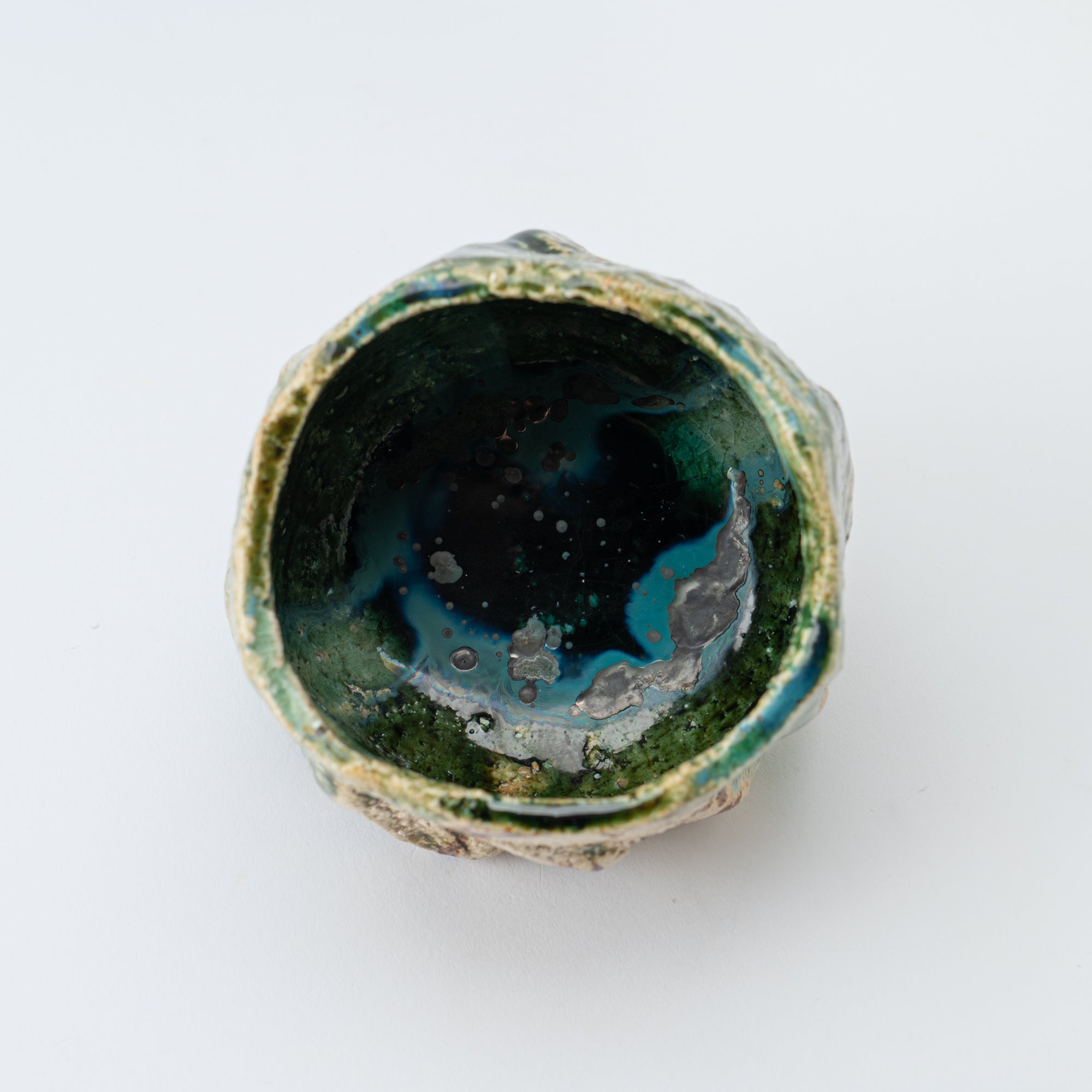
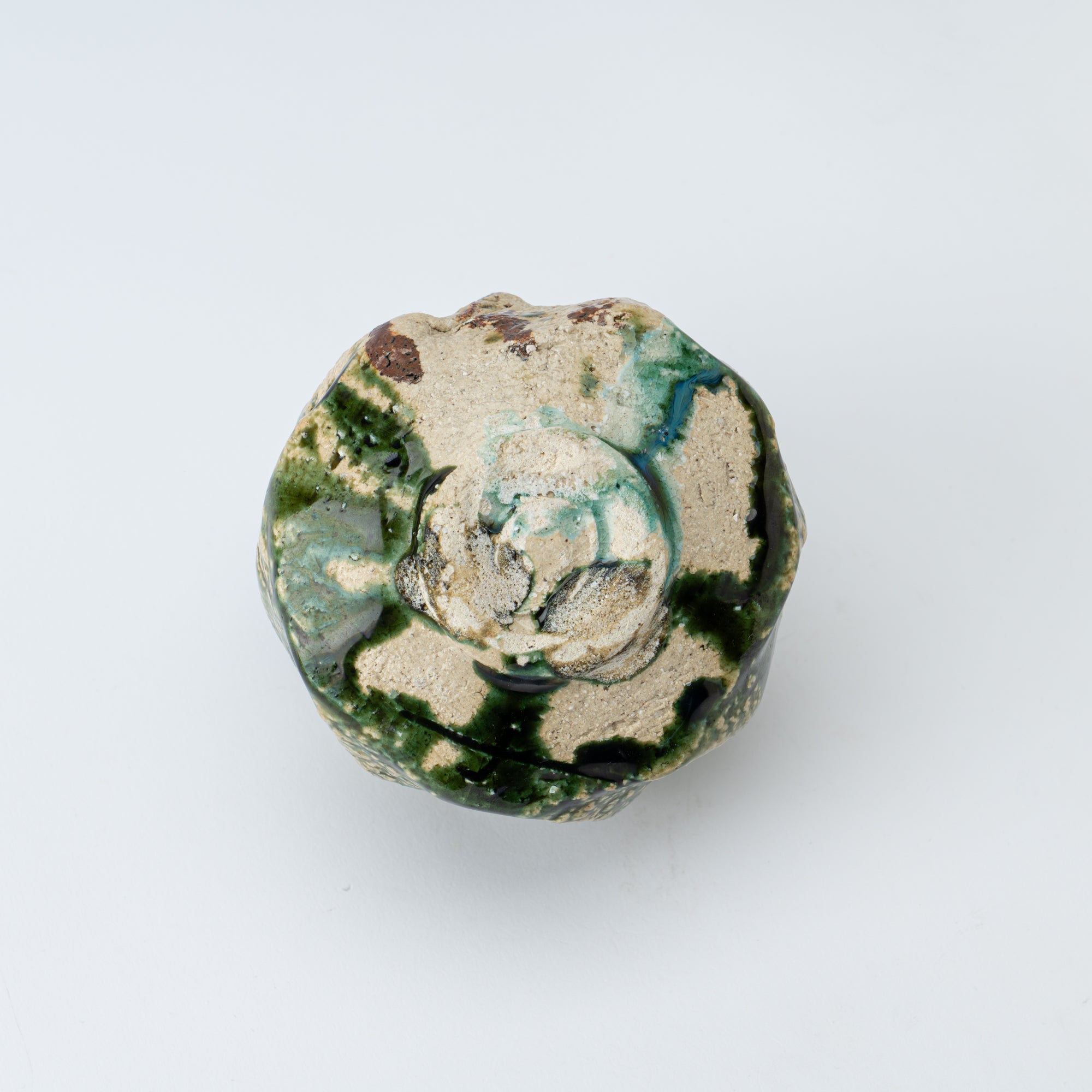
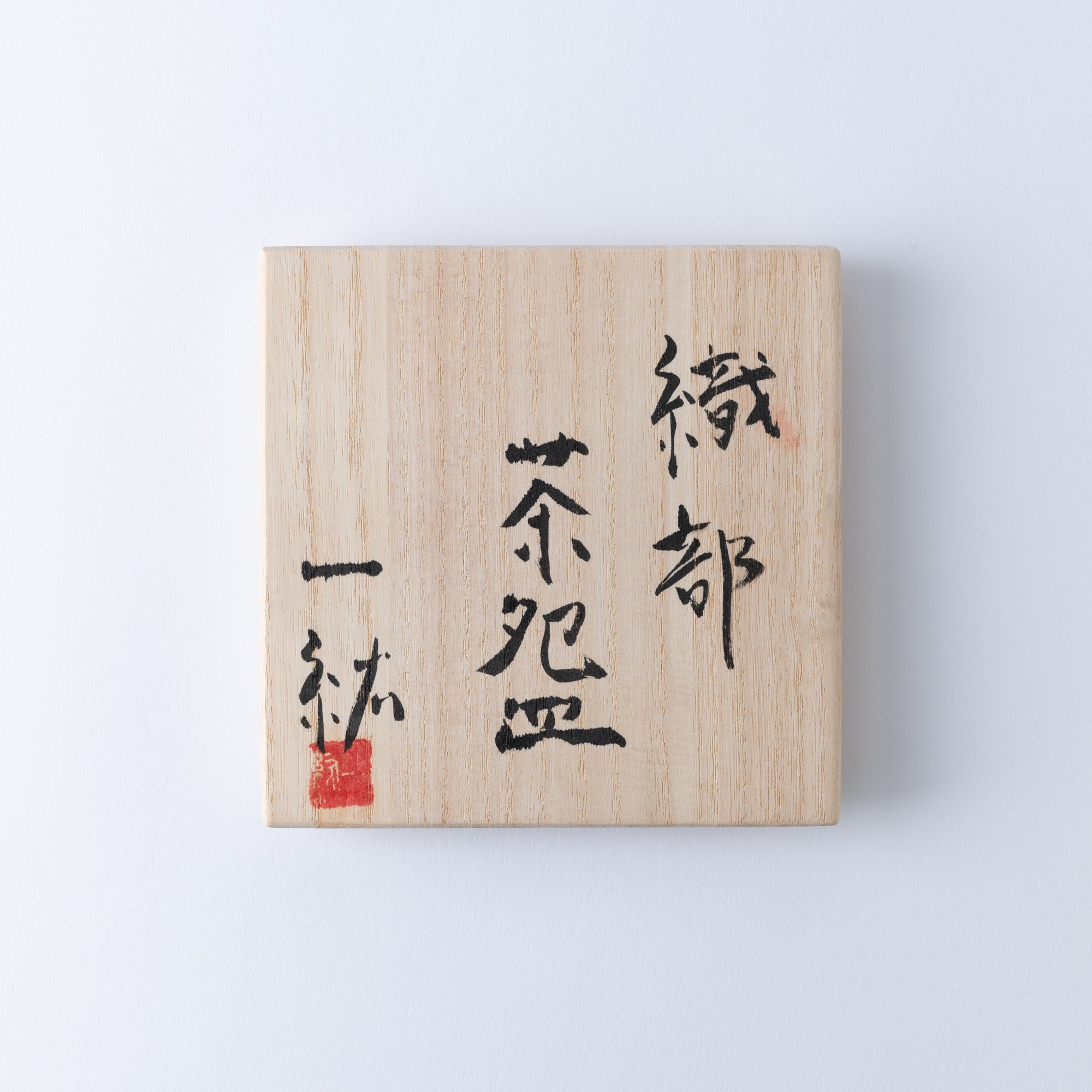
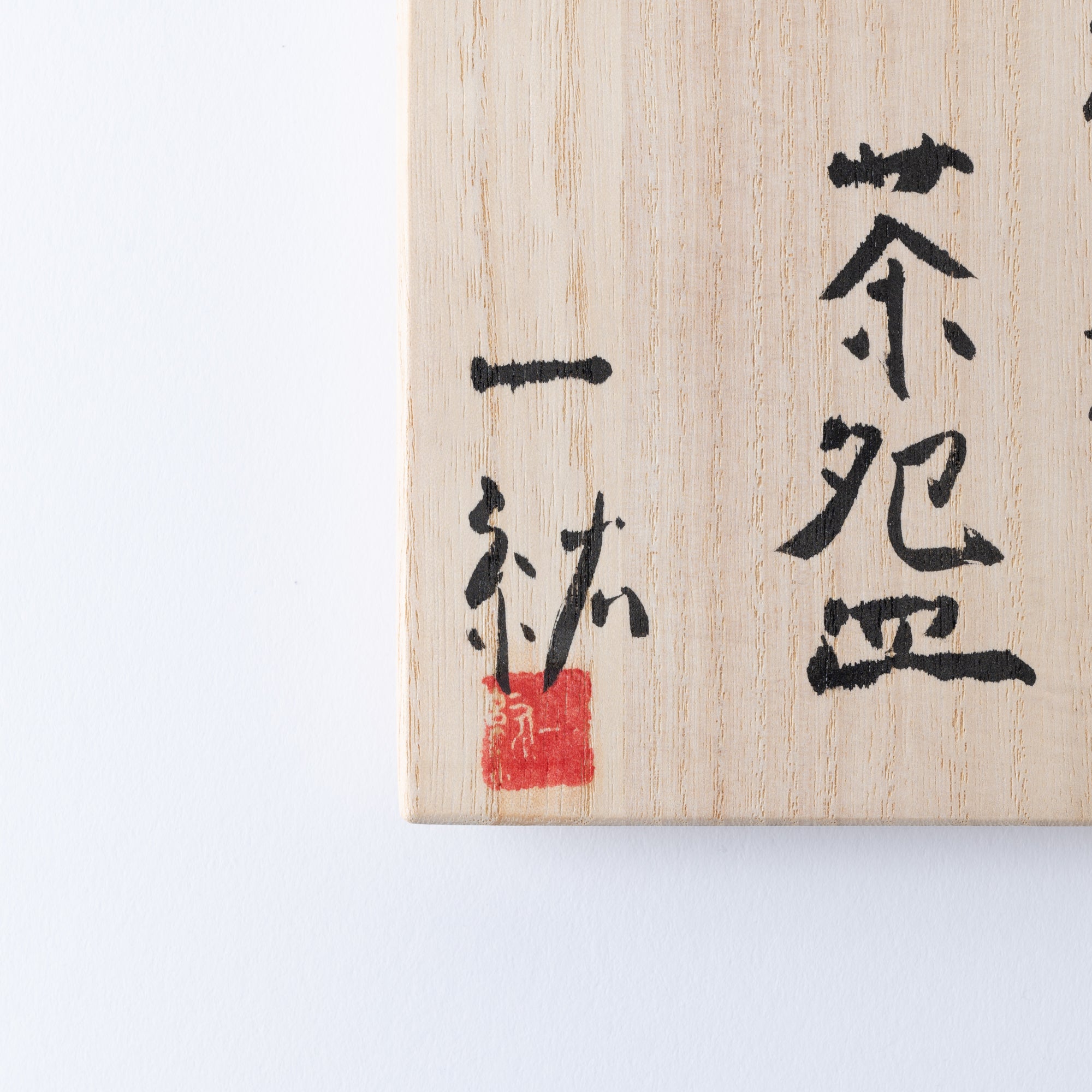
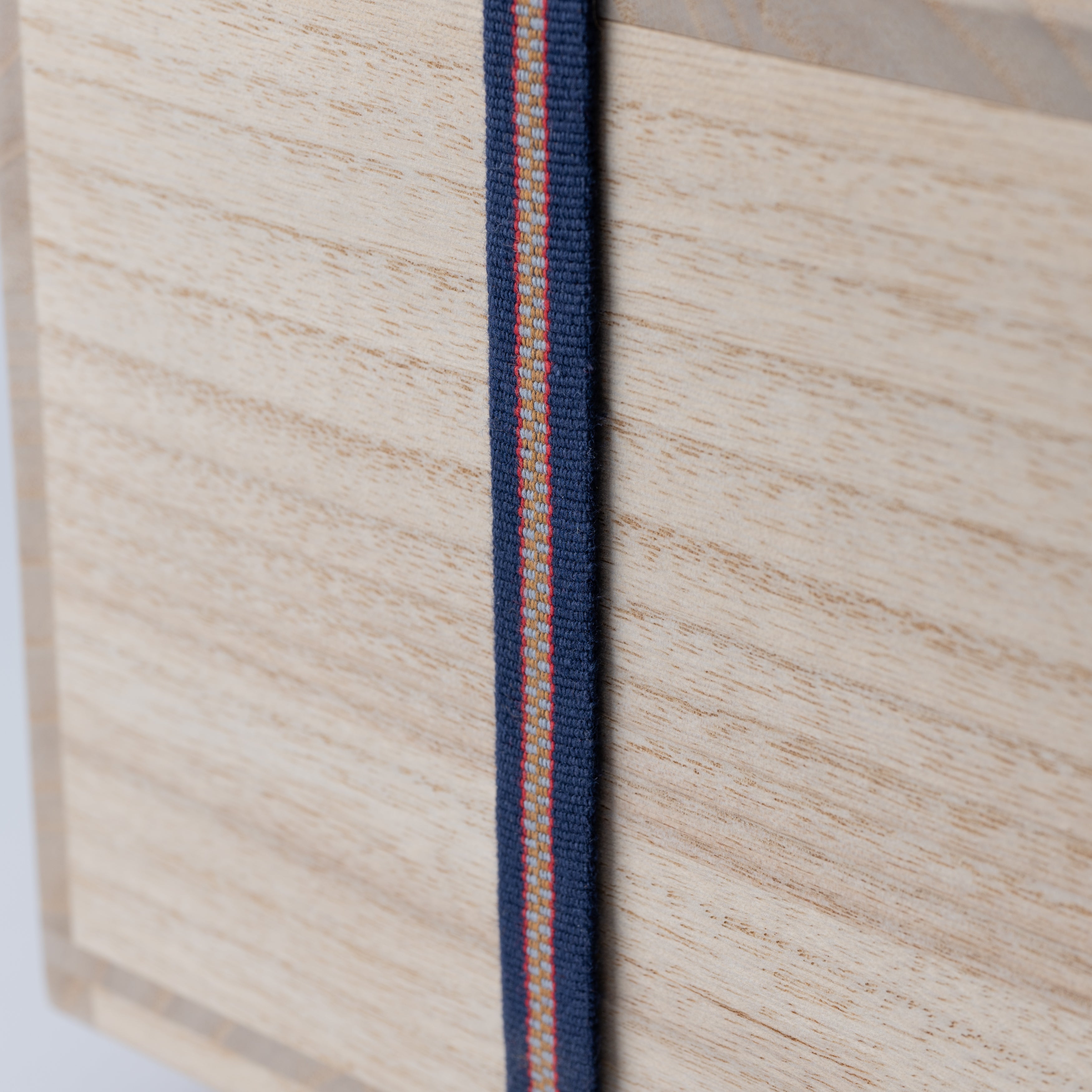
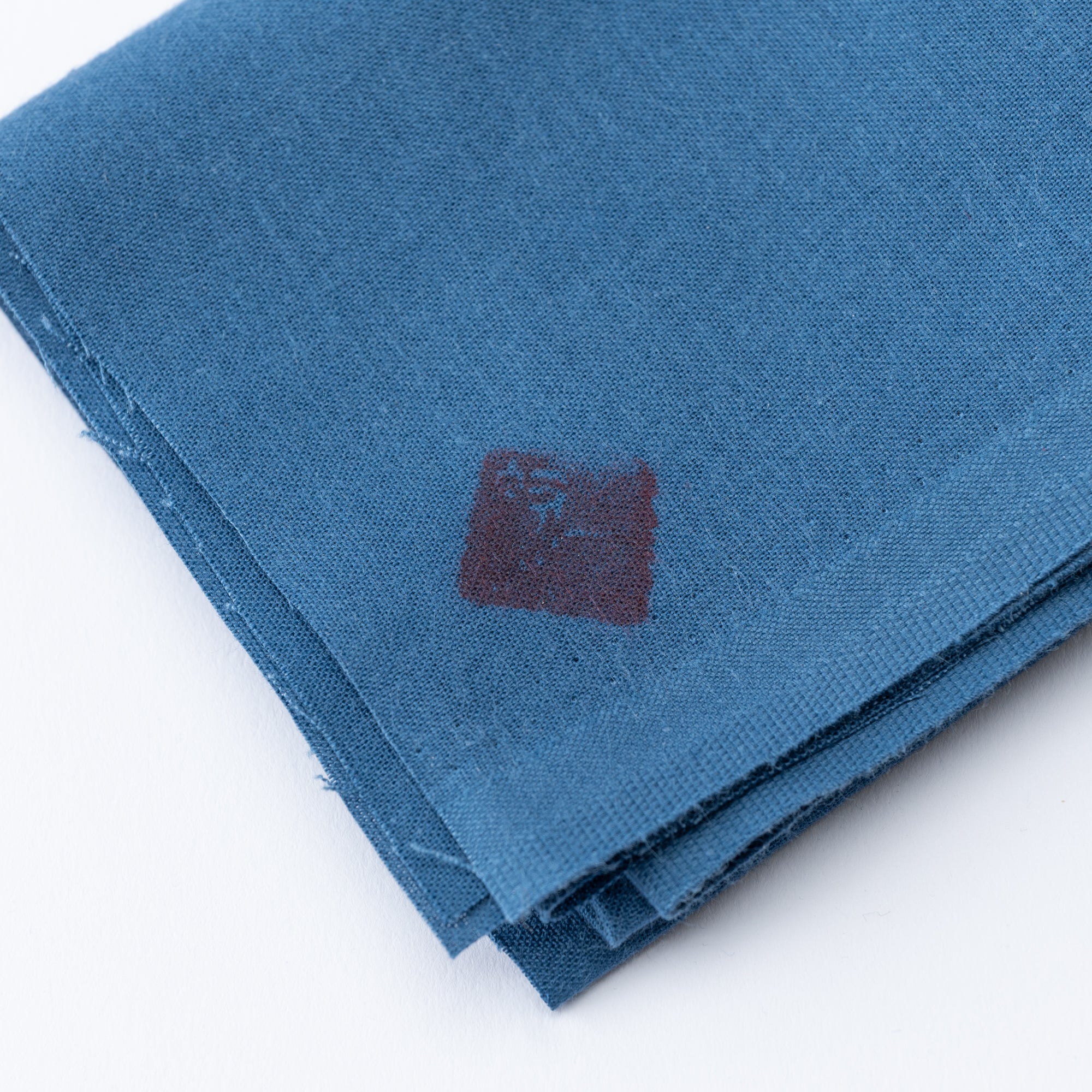
Oribe Stone-Impressed Matcha Bowl
In this matcha bowl, Iga ware artisan Fukushima Kazuhiro pursues a form that carries the weight of carved earth. Its irregular silhouette and textured walls lend it a sculptural beauty, a presence that feels both intentional and elemental. In hand, the bowl retains the density of its clay origins, offering a quiet strength within its asymmetry.
The bowl is made through kurinuki, a technique in which the outer form is shaped from a solid block of clay before the interior is patiently hollowed out. Because the clay must rest and firm between stages, the work proceeds slowly, often taking two to three days before carving can resume. Fukushima worked the sides with stone, leaving an uneven, tactile surface that contrasts with the smoothness of wheel-thrown pieces, imprinting the clay with both texture and time.
Multiple glazes, including the deep green Oribe glaze infused with copper oxide, flow across the surface. Areas of bare clay stand in contrast to the richly glazed sections, where tones shift from emerald green to earthen brown, and where silver crystallizations have appeared within the basin. These unpredictable details are not erased but embraced, reflecting the artist’s respect for the living nature of fire and mineral.
The bowl carries a raw vitality: direct and organic. Fukushima channels Oribe’s spirit of innovation into a form that feels timeless and singular, allowing the vessel to speak with its own grounded voice in the hand of the beholder.
DETAILS
| Quantity | 1 |
| Size |
D 10.5 cm (4.1 in) x H 10.5 cm (4.1 in) [Wooden box] L 15.0 cm (5.9 in) x W 15.0 cm (5.9 in) x H 15.0 cm (5.9 in) |
| Weight | 450 g (15.9 oz) |
| Material | Stoneware |
| Package Type | Wooden box |
| Microwave | No |
| Dishwasher | No |
Maker / Brand
Born as the eighth-generation successor of the Mukai Kiln, which has thrived in Iga for over three centuries, Fukushima Kazuhiro creates ceramic works that combine the profound presence of earth with the translucent beauty of vidro glaze and the distinctive, crackled kairagi texture. While deeply rooted in tradition, his work embraces a contemporary sensibility, transforming the seemingly accidental patterns formed by fire, clay, and ash into deliberate expressions of artistry. Through this process, Fukushima opens new horizons for Iga ware, infusing each piece with striking individuality and life.
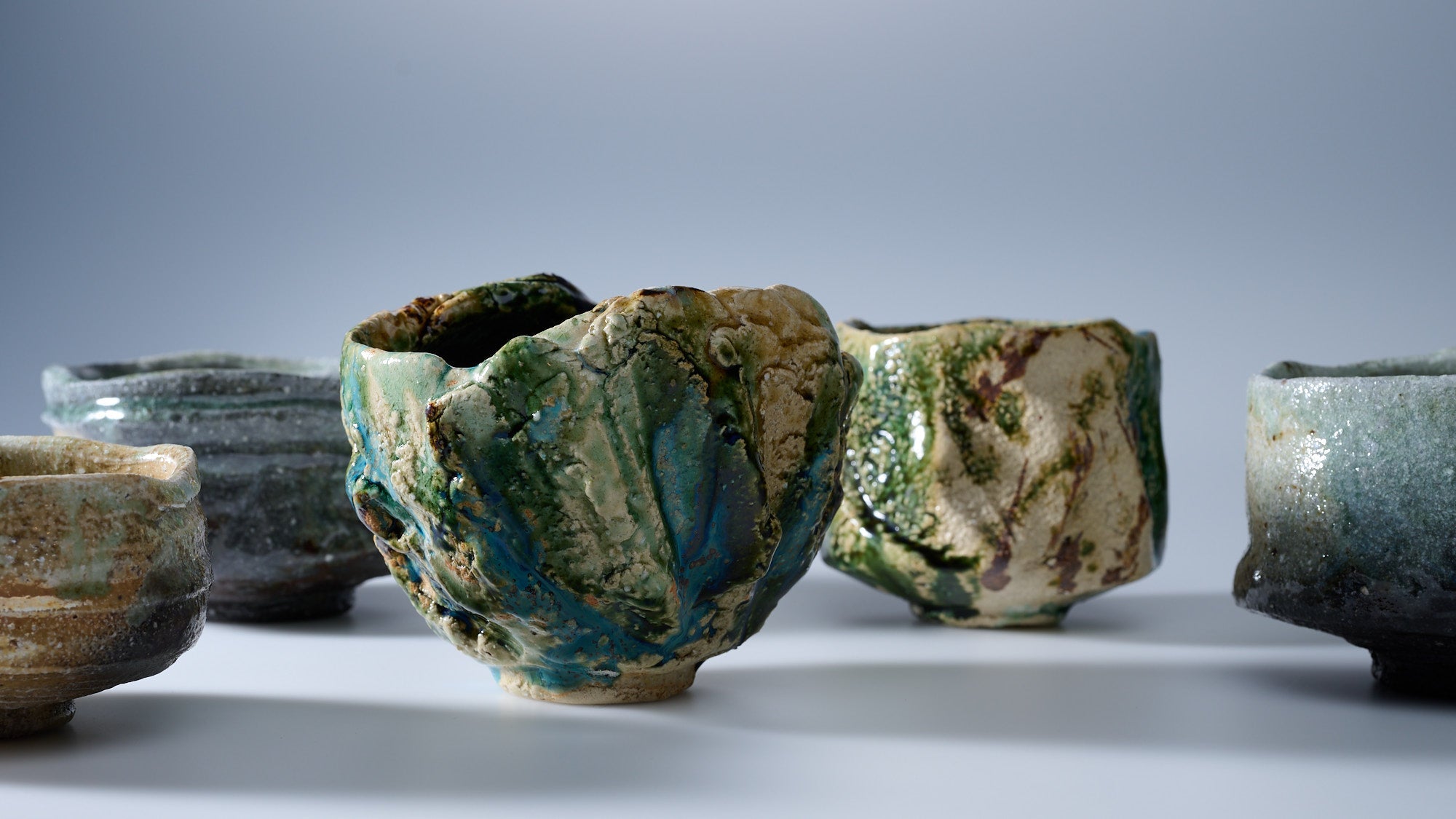
Crafts
Iga ware, produced in the Iga region of Mie Prefecture, is celebrated for its deep roots in Japanese ceramic history and its distinctive character. With a lineage stretching back some 1,200 years, Iga ware rose to prominence during the Momoyama period (1573–1615 CE), when it became closely tied to the aesthetics of the tea ceremony.
As a form of traditional Japanese pottery, Iga ware is admired for its robust clay, earthy texture, and the organic beauty that emerges through various firing methods. The natural ash glazing and translucent green, glass-like vidro effects created by the intense heat of the kiln reveal the expressive artistry that defines Iga ware.
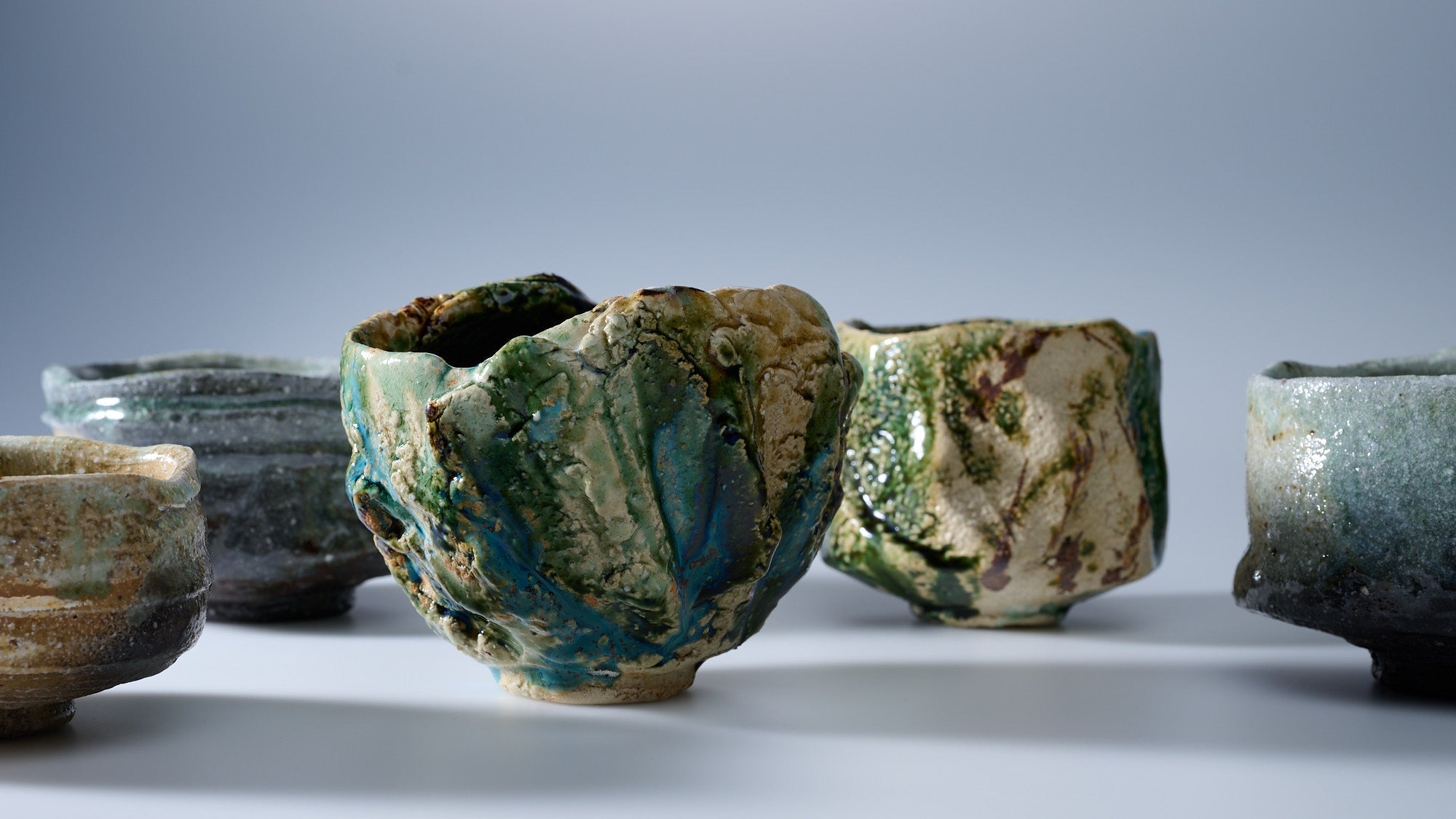
Notes
Choose options



















































About Artist
Musubi Gallery
Since its inception, MUSUBI KILN has strived to introduce the world to the finest traditional crafts from masters all around Japan.
Here, in the Gallery, we seek to showcase the highest echelon of traditional techniques passed down through generations. You can discover works from masters who have not only perfected those methods, but added their imagination to innovate the craft even further.
Some of these masters have even been named Living National Treasures, a title bestowed upon them by the Japanese government to formally recognize their contribution to crafts and culture — thereby cementing their legacy and making them an important part of art history.
Each piece is meticulously handcrafted over many months to create a timeless treasure that's unlike any other. And when it's in your home, you, too, will become part of that history.
Welcome to the Gallery. Please, peruse at your leisure.
